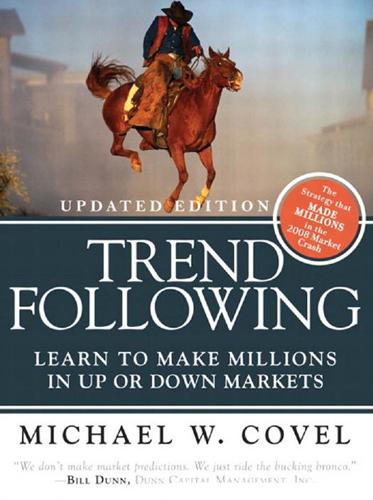
Trend Following: How Great Traders Make Millions in Up or Down Markets
by
Michael W. Covel
Published 19 Mar 2007
While it’s not for everybody, it might be for you.” —Charles Faulkner, NLP modeler and trading coach, featured in numerous books including The New Market Wizards “I think the book did a superb job of covering the philosophy and thinking behind trend following (basically, why it works). You might call it the Market Wizards of Trend Following.” —Van K. Tharp, Ph.D., president, International Institute of Trading Mastery, Inc. Van was originally profiled in The Market Wizards by Jack Schwager. “I think that this book documents a great deal of what has made trend following managers a successful part of the money management landscape (how they manage risk and investment psychology).
…
Schneeweis, Thomas, and Spurgin, Richard. Quantitative Analysis of Hedge Fund and Managed Futures Return and Risk Characteristics, in Evaluating and Implementing Hedge Fund Strategies, Second Edition, R. Lake ed., 2002. Schwager, Jack D. Getting Started in Technical Analysis. New York: John Wiley & Sons, Inc., 1999. Schwager, Jack D. Market Wizards: Interviews with Top Traders. New York: HarperBusiness, 1989. Schwager, Jack D. The New Market Wizards: Conversations with America’s Top Traders. New York: HarperBusiness, 1992. Schwed Jr., Fred. Where Are the Customers’ Yachts? Canada: John Wiley & Sons, Inc., 1995. Seykota, Ed and Dave Druz.
…
This understanding gives him a distinct advantage. Ed Seykota Win or lose, everybody gets what they want out of the market. Some people seem to like to lose, so they win by losing money. Ed Seykota48 After you enter the world of markets and investing, you will eventually run across the book Market Wizards by Jack Schwager. Of all the trader interviews in Market Wizards, the most memorable is the one with Ed Seykota. While some may perceive Seykota’s manner as extremely direct, most will agree Seykota is unique in the way he thinks. One profound and now famous statement of his is, “Everybody gets what they want out of the market.”
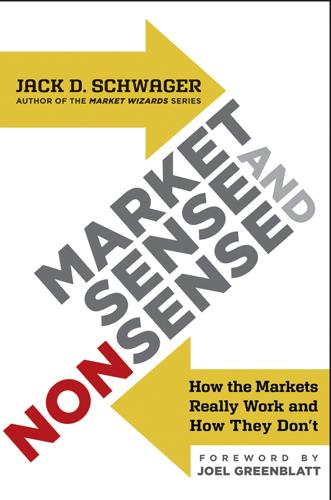
Market Sense and Nonsense
by
Jack D. Schwager
Published 5 Oct 2012
Investment Insights Chapter 21: Portfolio Construction Principles The Problem with Portfolio Optimization Eight Principles of Portfolio Construction Correlation Matrix Going Beyond Correlation Investment Insights Epilogue: 32 Investment Observations Appendix A: Options—Understanding the Basics Appendix B: Formulas for Risk-Adjusted Return Measures Sharpe Ratio Sortino Ratio Symmetric Downside-Risk Sharpe Ratio Gain-to-Pain Ratio (GPR) Tail Ratio MAR and Calmar Ratios Return Retracement Ratio Acknowledgments About the Author Index Other Books by Jack D. Schwager Hedge Fund Market Wizards: How Winning Traders Win Market Wizards: Interviews with Top Traders The New Market Wizards: Conversations with America’s Top Traders Stock Market Wizards: Interviews with America’s Top Stock Traders Schwager on Futures: Technical Analysis Schwager on Futures: Fundamental Analysis Schwager on Futures: Managed Trading: Myths & Truths Getting Started in Technical Analysis A Complete Guide to the Futures Markets: Fundamental Analysis, Technical Analysis, Trading, Spreads, and Options Study Guide to Accompany Fundamental Analysis (with Steven C.
…
His previous experience also includes 22 years as director of futures research for some of Wall Street’s leading firms and 10 years as the co-principal of a CTA. Mr. Schwager has written extensively on the futures industry and great traders in all financial markets. He is perhaps best known for his best-selling series of interviews with the greatest hedge fund managers of the past two decades: Market Wizards (1989, new edition 2012), The New Market Wizards (1992), Stock Market Wizards (2001), and Hedge Fund Market Wizards (2012). Mr. Schwager’s first book, A Complete Guide to the Futures Markets (1984), is considered to be one of the classic reference works in the field.
…
Available at SSRN: http://ssrn.com/abstract=870498. 2“Louis Rukeyser Shelves Elves Missed Market Trends Tinkering Didn’t Improve Index’s Track Record for Calling Market’s Direction (MUTUAL FUNDS),” Investor’s Business Daily, November 1, 2001. Retrieved March 29, 2011, from AccessMyLibrary: www.accessmylibrary.com/article-1G2.106006432/louis-rukeyser-shelves-elves.html. 3Jack D. Schwager, Market Wizards (New York: New York Institute of Finance, 1989). Chapter 2 The Deficient Market Hypothesis The most basic investment question is: Can the markets be beat? The efficient market hypothesis provides an unambiguous answer: No, unless you count those who are lucky. The efficient market hypothesis, a theory explaining how market prices are determined and the implications of the process, has been the foundation of much of the academic research on markets and investing during the past half century.

Unknown Market Wizards: The Best Traders You've Never Heard Of
by
Jack D. Schwager
Published 2 Nov 2020
Schwager Contents Preface Acknowledgments Part I: Futures Traders Peter Brandt: Strong Opinions, Weakly Held Jason Shapiro: The Contrarian Richard Bargh: The Importance of Mindset Amrit Sall: The Unicorn Sniper Daljit Dhaliwal: Know Your Edge John Netto: Monday Is My Favorite Day Part II: Stock Traders Jeffrey Neumann: Penny Wise, Dollar Wise Chris Camillo: Neither Marsten Parker: Don’t Quit Your Day Job Michael Kean: Complementary Strategies Pavel Krejčí: The Bellhop Who Beat the Pros Conclusion: 46 Market Wizard Lessons Epilogue Appendix 1: Understanding the Futures Markets Appendix 2: Performance Metrics Publishing details Other books by Jack D. Schwager Market Wizards: Interviews with Top Traders The New Market Wizards: Conversations with America’s Top Traders Hedge Fund Market Wizards: How Winning Traders Win Stock Market Wizards: Interviews with America’s Top Stock Traders The Little Book of Market Wizards: Lessons from the Greatest Traders A Complete Guide to the Futures Markets: Technical Analysis, Trading Systems, Fundamental Analysis, Options, Spreads and Trading Principles Market Sense and Nonsense: How the Markets Really Work (and How They Don’t) Schwager on Futures: Technical Analysis Schwager on Futures: Fundamental Analysis Schwager on Futures: Managed Trading Myths and Truths To Aspen The Next Generation May you have the charm, beauty, and sense of humor of both your parents and the spending sense of neither.
…
Schwager, Market Wizards (New Jersey, John Wiley and Sons, Inc., 2012), 171. 8 Jack D. Schwager, The New Market Wizards (New York, HarperBusiness, 1992), 132. 9 Jack D. Schwager, Market Wizards (New Jersey, John Wiley and Sons, Inc., 2012), 275. 10 Jack D. Schwager, Hedge Fund Market Wizards (New Jersey, John Wiley & Sons, Inc., 2012), 476. Jason Shapiro: The Contrarian The following individual names in this chapter are pseudonyms: David Reed, Walter Garrison, James Vandell, and Adam Wang. The following company names are pseudonyms: Cranmore Capital, Walter Garrison and Associates, The Henton Group, and Bryson Securities.
…
* * * 1 See Appendix 2, Performance Metrics, for an explanation of the adjusted Sortino ratio and how it differs from the conventionally calculated Sortino ratio. 2 See Appendix 2 for an explanation of this performance metric. 3 Jack D. Schwager, A Complete Guide to the Futures Market (New Jersey, John Wiley and Sons, Inc., 2017), 205–231. 4 Jack D. Schwager, Market Wizards (New Jersey, John Wiley and Sons, Inc., 2012), 9–82. 5 This three-word designation is a misnomer in at least two ways. First, the bulk of futures trading is in financial instruments (e.g., interest rate markets, currencies, and stock indexes), not commodities. Second, CTAs manage assets rather than give advice, as the name suggests. 6 Jack D. Schwager, The New Market Wizards (New York, HarperBusiness, 1992), 286–288. 7 Jack D. Schwager, Market Wizards (New Jersey, John Wiley and Sons, Inc., 2012), 171. 8 Jack D.
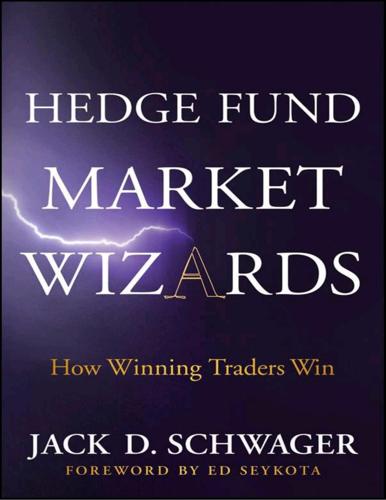
Hedge Fund Market Wizards
by
Jack D. Schwager
Published 24 Apr 2012
Contents Foreword Preface Acknowledgments Part One: Macro Men Chapter 1: Colm O’Shea Addendum: Ray Dalio’s Big Picture View Chapter 2: Ray Dalio Chapter 3: Larry Benedict Chapter 4: Scott Ramsey Chapter 5: Jaffray Woodriff Part Two: Multistrategy Players Chapter 6: Edward Thorp Chapter 7: Jamie Mai Chapter 8: Michael Platt Part Three: Equity Traders Chapter 9: Steve Clark Chapter 10: Martin Taylor Chapter 11: Tom Claugus Chapter 12: Joe Vidich Chapter 13: Kevin Daly Chapter 14: Jimmy Balodimas Chapter 15: Joel Greenblatt Conclusion Epilogue Appendix A Appendix B About the Author Index Other Books by Jack D. Schwager A Complete Guide to the Futures Markets: Fundamental Analysis, Technical Analysis, Trading, Spreads, and Options Getting Started in Technical Analysis Market Wizards: Interviews with Top Traders The New Market Wizards: Conversations with America’s Top Traders Stock Market Wizards: Interviews with America’s Top Stock Traders Schwager on Futures: Fundamental Analysis Schwager on Futures: Managed Trading Myths & Truths Schwager on Futures: Technical Analysis Study Guide to Accompany Fundamental Analysis (with Steven C.
…
His previous experience also includes 22 years as director of futures research for some of Wall Street’s leading firms and 10 years as the coprincipal of a CTA. Mr. Schwager has written extensively on the futures industry and great traders in all financial markets. He is perhaps best known for his bestselling series of interviews with the greatest hedge fund managers of the last two decades: Market Wizards (1989, new edition 2012), The New Market Wizards (1992), and Stock Market Wizards (2001). Mr. Schwager’s first book, A Complete Guide to the Futures Markets (1984), is considered to be one of the classic reference works in the field. He later revised and expanded this original work into the three-volume series Schwager on Futures, consisting of Fundamental Analysis (1995), Technical Analysis (1996), and Managed Trading (1996).
…
We wind up knowing each of his subjects intimately—and also as a uniquely complete expression of repeating themes, such as: be humble; go with the flow; manage risk; do it your own way. Schwager’s books are essential reading for anyone who trades, wants to trade, or wants to pick a trader. I go back a ways with Jack. I recall meeting him while we were both starting out as traders, long on enthusiasm and short on experience. Over the years, I watched him grow, mature, and develop his talent, evolving to become our Chronicler-General. Schwager’s contribution to the industry is enormous. His original Market Wizards inspired a whole new generation of traders, many of whom subsequently appeared in The New Market Wizards, and then, in turn, in Stock Market Wizards. Jack’s Wizards series becomes the torch that traders pass from one generation to the next.
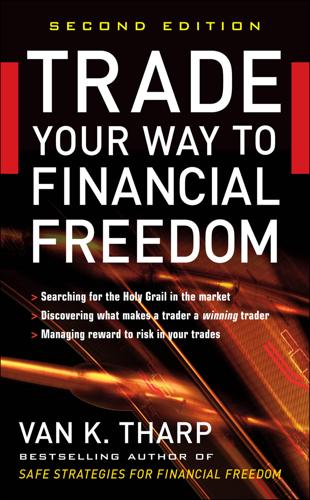
Trade Your Way to Financial Freedom
by
van K. Tharp
Published 1 Jan 1998
However, be careful if you don’t have enough money. Call 503-955-2800 for more information. Schwager, Jack. Market Wizards. New York: New York Institute of Finance, 1988. A must read for any trader or investor. ———. The New Market Wizards. New York: HarperCollins, 1992. Continues the tradition, and it again is a must read. William Eckhardt’s chapter alone is worth the price of the book. ———. Schwager on Futures: Fundamental Analysis. New York: Wiley, 1996. Great book for anyone who wants to understand fundamentals in the futures market. ———. Schwager on Futures: Technical Analysis. New York: Wiley, 1996. Solid background on many topics related to learning about markets.
…
He was a professional money manager who was qualified both as a CTA and as a registered investment advisor (RIA). He was also a private investor in that he invested his own money in his funds. Tom was interviewed by Jack Schwager in his book The New Market Wizards at my suggestion. Schwager then named him “Mr. Serenity,” and he considers him his best personal role model out of all the market wizards he interviewed. Basso is also one of the most logical, organized people I have ever met. As a result, I thought you might like to learn how Tom thinks about trading system development. The first part of the objectives exercise involves taking a self-inventory of your time, money, skills, and other resources.
…
Charles LeBeau, a veteran trader of 40 years, says that when he started to design trading systems for the computer, he had hundreds of beliefs about the market. Most of those beliefs did not stand up to the rigors of computerized testing. When your mind is open, start reading about the markets.2 I strongly recommend almost any book written by Jack Schwager. However, start with Market Wizards and The New Market Wizards. They are two of the best books available on trading and investing. Two other books by Schwager, Fundamental Analysis and Technical Analysis, are also excellent. Computer Analysis of the Futures Market, by Charles LeBeau and David Lucas, is one of the best books available on the systematic process of developing a trading system.
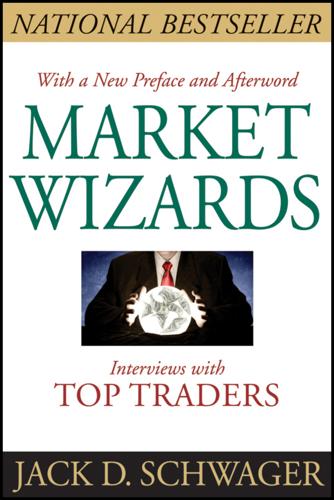
Market Wizards: Interviews With Top Traders
by
Jack D. Schwager
Published 7 Feb 2012
They are heroes of Wall Street, and Jack Schwager’s book brings their characters vividly to life.” —Robert R. Prechter, Jr., Editor, The Elliott Wave Theorist Other Books by Jack D. Schwager A Complete Guide to the Futures Markets: Fundamental Analysis, Technical Analysis, Trading, Spreads, and Options Getting Started in Technical Analysis The New Market Wizards: Conversations with America’s Top Traders Stock Market Wizards: Interviews with America’s Top Stock Traders Schwager on Futures: Fundamental Analysis Schwager on Futures: Managed Trading Myths & Truths Schwager on Futures: Technical Analysis Study Guide to Accompany Fundamental Analysis (with Steven C.
…
Tharp: The Psychology of Trading The Trade: A Personal Experience Postscript: Dreams and Trading Final Word What I Believe 22 Years Later Appendix 1: Program Trading and Portfolio Insurance Appendix 2: Options—Understanding the Basics Glossary Excerpt: Edward Thorp Additional Praise for Market Wizards “Market Wizards is one of the most fascinating books ever written about Wall Street. A few of the ‘Wizards’ are my friends—and Jack Schwager has nailed their modus operandi on the head.” —Martin W. Zweig, Ph.D., Editor, The Zweig Forecast “It is difficult enough to develop a method that works. It then takes experience to believe what your method is telling you.
…
All the Market Wizards found an approach that worked for them because it fit their personality. The approach of any given trader, even a Market Wizard, can be disastrous for other traders who have very different comfort levels in trading style. Over the years, I have received many inquiries that read something like the following: Dear Mr. Schwager, I wonder whether you know of any traders who are looking for apprentices. I’m willing to work long hours without pay to be able to learn from one of the Market Wizards. This type of query reflects a misdirected quest. You cannot succeed in the markets by copying someone else’s approach, because the odds are remote that their method will fit your personality.
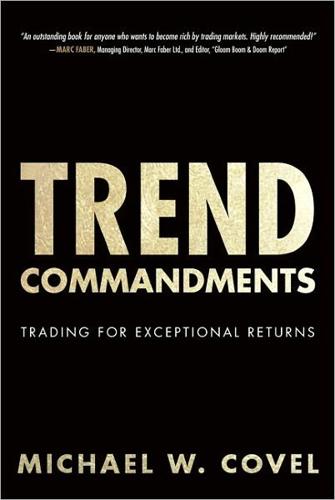
Trend Commandments: Trading for Exceptional Returns
by
Michael W. Covel
Published 14 Jun 2011
Wide-ranging, irreverent, revealing, eminently quotable, and right on the money.” —Charles Faulkner, Market Wizard Trading Coach “A rapidly moving, non-technical, and outside-the-box effort that smartly captures the essentials of trend following.” —Peter Borish, Chairman and CEO, Computer Trading Corp “Covel’s Trend Commandments offers a breezy rumination on what is right about trend following and what is wrong about conventional trading approaches.” —Jack Schwager, Author of Market Wizards and Schwager on Futures series “Michael Covel’s Trend Commandments is full of practical wisdom in bite-size portions on the benefits of trend trading—written in a straightforward storytelling format.
…
Daily Wealth, April 11, 2009. See http://www.Dailywealth.com. 5. Martin Schwartz, Pit Bull: Lessons from Wall Street’s Champion Day Trader. New York: Harper Collins, 1999. 6. See http://en.wikipedia.org/wiki/David_Harding (mathematician). 7. Jack D. Schwager, Market Wizards. New York: NYIF Corp., 1989. 8. See http://www.absolutereturn-alpha.com. 9. Jack D. Schwager, The New Market Wizards. New York: HarperBusiness, 1992. 247 10. See http://www.forbes.com/profile/louis-bacon. 11. See http://www.forbes.com/profile/paul-tudor-jones. 12. Man Group front page, March 23, 2011. See http://www.mangroupplc.com/. 13. 2008 Sunrise Capital Chart. 14. 2009 Sunrise Capital Chart. 15. 2010 Sunrise Capital Chart. 16.
…
Investment Biker: On the Road With Jim Rogers. New York: Random House, Inc., 1994. Bibliography 245 Rosenblum, Irwin. Up, Down, Up, Down, Up: My Career at Commodities Corporation. United States: Xlibris, 2003. Schroeder, Alice. The Snowball: Warren Buffett and the Business of Life. New York: Bantam Books, 2008. Schwager, Jack D. Market Wizards: Interviews with Top Traders. Columbia: Marketplace Books, 2006. Stridsman, Thomas. Trading Systems That Work: Building and Evaluating Effective Trading Systems. New York: McGraw Hill, 2001. Taleb, Nassim Nicholas. Fooled By Randomness: The Hidden Role of Chance in the Markets and in Life.
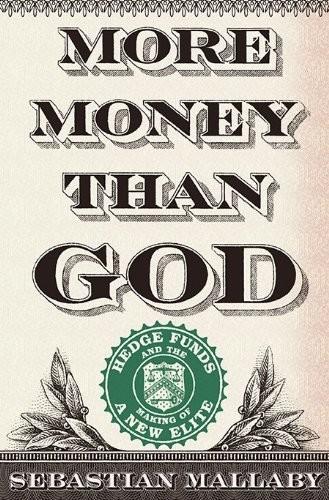
More Money Than God: Hedge Funds and the Making of a New Elite
by
Sebastian Mallaby
Published 9 Jun 2010
Jones seems to have learned the value of visibility from Eli Tullis, the cotton trader under whom he served an apprenticeship in New Orleans. Jones recalls of Tullis, “Everyone always knew what his position was. He was very easy to tag. Eli’s attitude was, ‘The hell with it, I’m going to take them head on.’” Schwager, Market Wizards, p. 121. 29. Trader: The Documentary. 30. This description is taken from Laing, “Trader with a Hot Hand.” 31. Schwager, Market Wizards, p. 129. 32. A 1988 Wall Street Journal profile captures Jones’s trading style. “Charles Christensen, a futures analyst with Refco, says that’s what happened on February 25 in the Chicago Board of Trade’s Treasury bond futures pit, the most active futures market in the U.S.
…
I was prepared to give him his head.” Steinhardt interview, October 4, 2007. 18. Steinhardt, No Bull, p. 186. 19. Steinhardt interview, October 4, 2007. See also Steinhardt, No Bull, p. 187. In an interview with Jack D. Schwager, Steinhardt approvingly cites a fellow investor who says, “All I bring to the party is twenty-eight years of mistakes.” See Jack D. Schwager, Market Wizards: Interviews with Top Traders (New York: New York Institute of Finance, 1989), p. 211. It should also be noted that when Steinhardt tries to give examples of his feel for the markets, he can sound underwhelming. “Often listening to an idea led me to an entirely different conclusion than the proponent of that same idea,” he writes, as though the experience of realizing what you think by listening to someone who thinks otherwise were remotely unusual.
…
“It was rare for someone who was running the firm, like me, to be sitting on the desk, getting block indications and speaking to senior block traders, in contrast to most other firms, which had people who were nothing but clerks doing the same thing. So if you are a senior guy at a brokerage firm, who would you rather speak to? Me or some clerk? You would rather speak to me, open up to me, have me on your side. By being there, I got a better call than most others.” Steinhardt interview, October 4, 2007. See similar remarks in Schwager, Market Wizards, p. 213. 31. Steinhardt interview, September 10, 2007. 32. Steinhardt, No Bull, p. 97. 33. Steinhardt recalls: “There were opportunities created by dealing with [Salomon’s] Jay Perry. There were times he was eager to get his print on the tape. When you knew that, you offered him the wrong price.
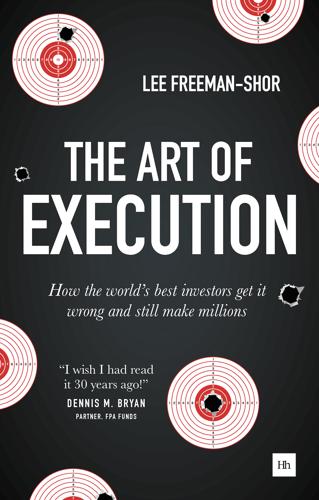
The Art of Execution: How the World's Best Investors Get It Wrong and Still Make Millions
by
Lee Freeman-Shor
Published 8 Sep 2015
* * * 3 ‘Judgment under uncertainty: Heuristics and biases’, Science, by Amos Tversky and Daniel Kahneman (1974). 4 Free Radicals: The Secret Anarchy of Science, by Michael Brooks (2011). 5 The General Theory of Employment, Interest and Money, by John Maynard Keynes (1936). 6 How We Decide, by Johan Lehrer (2009). 7 ‘Money: A Bias for the Whole’, Journal of Consumer Research, by Himanshu Mishra, Arul Mishra and Dhananjay Nayakankuppam (2006). 8 ‘Denomination Effect’, Journal of Consumer Research, Priya Raghubir and Joydeep Srivastava (2009). 9 One Up on Wall Street, by Peter Lynch and John Rothchild (2000). 10 The Dhandho Investor, by Mohnish Pabrai (2007). 11 Quote attributed to Donald Rumsfeld. 12 Being Right or Making Money, by Ned Davis (2000). 13 Ibid. 14 Fortune’s Formula, by William Poundstone (2006). 15 blog.asmartbear.com/ignoring-the-wisdom-of-crowds.html 16 The Little Book of Behavioural Investing, by James Montier (2010). 17 An Astronaut’s Guide to Life on Earth, by Col. Chris Hadfield (2013). Referring to his first mission where the objective was to construct a docking module on the Russian space station Mir. 18 In Market Wizards, by Jack D. Schwager (1990). 19 In The New Market Wizards, by Jack D. Schwager (1994). 20 So Far, So Good, by Roy R. Neuberger (1997). 21 The Wisdom of Crowds, by James Surowiecki (2005) 22 Predictably Irrational, by Dan Ariely (2009). “[T]o be a great investor you should have a clear maximum time for the idea to play out.” 23 The Dhandho Investor, by Mohnish Pabrai (2007). 24 ‘Gambling with the House Money and Trying to Break Even: The Effects of Prior Outcomes on Risky Choice’, Management Science, Richard H.
…
Combining several quotes relating to Berk and Green’s 2004 findings in their paper: ‘Mutual fund flows and performance in rational markets’, Journal of Political Economy, by Jonathan Berk and Richard Green (2004). 57 Davis (2000). 58 Quoted in Schwager (1990). 59 Davis (2000). 60 Schwager (1994). Conclusion: The Habits of Success Having had the privilege of investing over a billion dollars with the best investors in the world, and managing them on a daily basis for over eight years, my preconceptions about successful investors have been shattered.
…
, American Economic Review, by Robert Shiller (1981). 51 Druckenmiller is a very famous investor who achieved compounded returns of ~30% from 1986 to 2010 before announcing he was returning all outside investor capital from his Duquesne fund and forming a family office. 52 Schwager (1994). 53 Those of you with a keen eye will note that this was the same date as for Spirax-Sarco. The reason is simple. That’s when I gave him the money to invest. 54 ‘Best Ideas’, by Randolph Cohen, Christopher Polk, Bernhard Silli (2010). Available at SSRN: ssrn.com/abstract=1364827 55 Active weight, not absolute weight. 56 Cohen, Polk and Silli (2010).
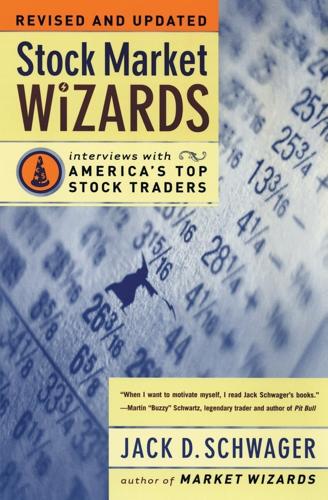
Stock Market Wizards: Interviews With America's Top Stock Traders
by
Jack D. Schwager
Published 1 Jan 2001
FIRST EDITION Designed lay Fearn Cutler Library of Congress Cataloging-in-Publication Data Schwager, Jack D., 1948Stock market wizards : interviews with America's top stock traders / by Jack D. Schwager. p. cm. ISBN 0-06-662058-9 1. Stockbrokers—United States—Interviews. 2. Investment advisors—United States—Interviews. 3. Floor traders (Finance)—United States—Interviews. 4. Futures market—United States. 5. Financial futures—United States. I. Title. HG4621 .S2862001 337. 64'0973—dc21 00-058154 In memory of my mother, Margaret Schwager, loved by all who knew her for her kindness, empathy, and sincerity. and In memory of my brother, Kerwin Farkas, deeply loved by family and many friends whose support never waned_ a reflection of a life well lived.
…
Neither the publisher nor the author assumes liability for any losses that may be sustained by the use of the method described in this book, and/or this potential conflict of interest, and any such liability is hereby expressly disclaimed. STOCK MARKET WIZARDS. Copyright © 2001 by Jack D. Schwager. All rights reserved. Printed in the United States of America. No part of this book may be used or reproduced in any manner whatsoever without written permission except in the case of brief quotations embodied in critical articles and reviews. For information address HarperCollins Publishers, Inc., 10 East 53rd Street, New York, NY 10022.
…
Tom DeMark, a renowned technical analyst whose indicators are featured on many of the country's leading financial data services, was particularly vigorous in his efforts to help me find traders for this book. Tom is in a good position to provide such assistance, holding the unofficial world record as the technical analyst who has worked for the most (four) Market Wizards or their organizations. Marty Schwartz and Linda Raschke were two former Market Wizards ("former" referring to the books in which their interviews appeared, not their trading talent) who helped me find new Market Wizards for this book. Other industry contacts who were particularly helpful in aiding my search for great trading talent include: Sol Waksman and George Van; Bob Morris, Andy Good, Tony Cimirusti, Loran Fleckenstein, and Jason Perl.

New Market Wizards: Conversations With America's Top Traders
by
Jack D. Schwager
Published 28 Jan 1994
About the Author JACK D. SCHWAGER is a managing director and principal of the Fortune Group, an alternative asset management specialist regulated in the UK and the United States. Schwager is the Senior Portfolio manager for the Fortune’s Market Wizards Funds of Funds, a broadly diversified series of institutional hedge fund portfolios. He also serves on the board of Fortune’s research affiliate Global Fund Analysis, a leading source of independent hedge fund research. Visit www.AuthorTracker.com for exclusive information on your favorite HarperCollins author. Books by Jack D. Schwager Market Wizards A Complete Guide to the Futures Markets Stock Market Wizards Copyright THE NEW MARKET WIZARDS.
…
Many of the most actively traded futures markets, such as those in the financial instruments, are not true commodities, and many commodity markets have no corresponding futures markets. Trading volume in futures has expanded tremendously during the past generation. In 1991 total volume of all futures traded in the United States alone exceeded 263,000,000. Conservatively assuming an aver- Note: This chapter was adapted from Jack Schwager, Market Wizards (New York: New York Institute of Finance, 1989). 72 / The New Market Wizard age contact value of at least $40,000, the total dollar value of these contracts exceeded $10 trillion! (Yes, trillion, not billion.) The essence of a futures market is in its name. Trading involves a standardized contract for a commodity, such as gold, or a financial instrument, such as T-bonds, for a future delivery date, as opposed to the present time.
…
Schwager Market Wizards A Complete Guide to the Futures Markets Stock Market Wizards Copyright THE NEW MARKET WIZARDS. Copyright © 1992 by Jack D. Schwager. All rights reserved under International and Pan-American Copyright Conventions. By payment of the required fees, you have been granted the non-exclusive, non-transferable right to access and read the text of this e-book on-screen. No part of this text may be reproduced, transmitted, down-loaded, decompiled, reverse engineered, or stored in or introduced into any information storage and retrieval system, in any form or by any means, whether electronic or mechanical, now known or hereinafter invented, without the express written permission of HarperCollins e-books.
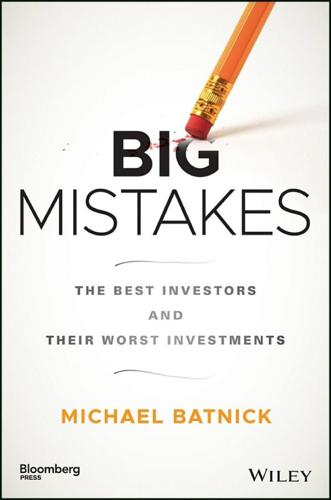
Big Mistakes: The Best Investors and Their Worst Investments
by
Michael Batnick
Published 21 May 2018
Introduction to Stanley Druckenmiller's speech at the Lost Tree Club, Palm Beach, Florida, January 18, 2015. 6. Quoted in Sebastian Mallaby, More Money Than God (New York: Council on Foreign Relations, 2011), 148. 7. Jack D. Schwager, The New Market Wizards (New York: HarperBusiness, 1994, 197. 8. Druckenmiller, speech at the Lost Tree Club. 9. Ibid. 10. Schwager, New Market Wizards, 193. 11. Ibid., 230. 12. Ibid., 218. 13. Ibid., 237. 14. Mallaby, More Money Than God, 166. 15. Ibid. 16. Ibid., 150. 17. Ibid., 178. 18. Ibid., 180. 19. Edward Wyatt, “Market Place; Soros Advisers to Establish Separate Firm,” New York Times, May 18, 1999. 20.
…
My mother died a few days later. It was the hardest thing I've ever experienced. When my mother passed, she left me and my siblings some money. I had already read Jack Bogle's The Little Book of Common Sense Investing, and the idea of an index fund made a lot of sense to me. But I also read Jack Schwager's Market Wizards and the idea of becoming the next Paul Tudor Jones was much more appealing. This was 2011, and the markets were incredibly volatile. So I did what any reasonable person with no experience does when markets are acting like a roller coaster, I started trading 3x levered ETFs. If you're not familiar with what these are, they're baskets of stocks that moves three times as much as the underlying does.
…
Penney, Ackman targeting, 90 Jobs, Steve, 148 Johnson, Edward, 68, 69 Johnson, Ned, 69 Jonas, Stan, 39 Jones, Paul Tudor, 15, 52, 103, 119, 159 Jordan, Michael, 105 JP Morgan, liquidity, 19 Kahneman, Daniel, 5, 15, 75, 87 Kahn, Irving, 4 Keller, Helen, 31 Kennedy Slide, The, 70 Keynes, John Maynard, 117, 121, 157 education, 122 endowment fund control, 123 First Bursar, 123 Kickstarter, Sacca investment, 149 King's College assets, decline, 126 endowment, 123–124 Estates Committee memo, 125 Klarman, Seth, 57 Knetsch, Jack Louis, 75 Kovner, Bruce, 103 Krass, Peter, 27 Kuwait, pension fund, 40 Leverage, impact, 41 Lewis, Michael, 39 Listerine, comparison, 91 Little Book of Common Sense Investing, The, (Bogle), 159 Livermore, Jesse (JL), 13, 15–16 bankruptcy, 21 Boy Plunger, 18, 20 lesson, 22 rebound, 19 windfall, evaporation, 18 Loeb, Dan, 92 Long‐Term Capital Management (LTCM), 104 arbitrage strategies, 41 fall, 42 Federal Reserve Bank of New York takeover, 42 founding, 38–39 problems, Russia (impact), 41 success, 40–41 Long‐term investment program, building, 62 Loomis, Carol, 40, 41 “Loser's Game, The” (Ellis), 38 Lowell Shoe, 80 Lowenstein, Roger, 4, 7, 68 Lowercase Capital, 149 Macro traders, problems, 103 Manhattan Fund (Tsai), 69, 71 Margin of safety, 5, 8 Market capitalization, 7 growth, 120 psychological forces, impact, 124 Market participants, stock motivation, 109 Market Wizards (Schwager), 159 Markowitz, Harry, 147, 152 Marron, Donald, 40 Marx, Karl, 4 Mauboussin, Michael, 38, 100, 131 MBIA, Inc. Ackman targeting, 90 credit default swaps, 133 McDonald's, Ackman targeting, 89–90 Mensa, 37–38 Meriwether, John, 35, 38 Merrill Lynch, 40 Merton, Robert, 39 Nobel Prize in Economics, 40–41 Microsoft, shareholder wealth, 109 Mohawk Data, trading level, 70 Money Game, The, (Smith), 68 Morgan Growth Fund, decline, 50 Morgan, Walter, 47–48 Morse, Charles, 19 Mortgage bonds, insuring, 133 Mullins, David, 39 Munger, Charles, 37, 78, 119, 137, 139 investment, 140 returns, 141 wealth, compounding, 143 Mungerisms, 3, 140 Mutual funds, superiority, 47–48 NASDAQ 100 index, increase, 57, 143 NASDAQ Composite, gains, 112 NASDAQ peak, 105 National Indemnity, Buffett purchase, 78 National Mutual, losses, 125 National Student Marketing, shares purchase, 70 Nebraska Furniture Mart, store opening, 78 Neill, Humphrey B., 67 Netflix, 139–140 Net working capital, 5 term, usage, 4 New Century Financial, 134 Newton, Isaac, 37 New York Institute of Finance, 4 New York Stock Exchange (NYSE), 4 listed stock trading, 135 opening, 147 shares, trading level (1934), 6–7 New York Vaporizing Co.
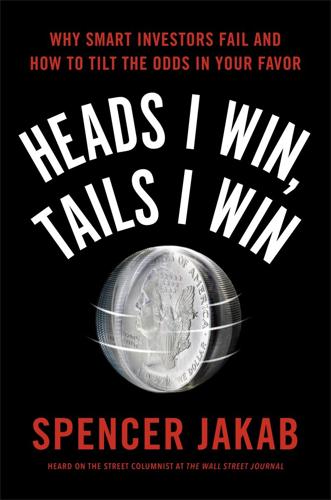
Heads I Win, Tails I Win
by
Spencer Jakab
Published 21 Jun 2016
I was in a graduate microeconomics lecture at Columbia University right around the time the series was running, and our instructor split us into two groups to demonstrate efficient market theory using a similar experiment: random stock pickers versus those who selected them based on personal research. I remember both that the random portfolio won and that my own pick, arrived upon with my eyes closed from a newspaper stock listing, did well. But at the time I was an avid reader of investor hagiographies such as Jack Schwager’s Market Wizards and John Train’s Money Masters of Our Time. As I pored over those interviews with gurus and their very smart-sounding techniques, it seemed like the professors in their ivory towers who said that stock picking was futile really needed to get out more. I didn’t become convinced that markets were mostly efficient until I started spending twelve hours a day with highly compensated fund managers a few years later.
…
T., 29–30 Baron Rothschild card game, 35–36, 38 Barron’s, 144, 231–32, 240 Bartiromo, Maria, 248 bear market, 22, 32, 35, 38, 46–47, 54–56, 61, 63, 93, 117, 120, 184–85, 237–38, 242, 245, 250 Bear Stearns, 40, 126, 199 Beardstown Ladies, 18–19, 31 behavioral finance, 21–22, 41–42, 70–72, 245 Berkshire Hathaway, 3, 157, 170–71, 235 Berman, Ken, 213 Bernstein, Richard, 145 Bespoke Investment Group, 46, 135 beta (market return), 105, 172, 193, 224 Betterment, 83 Black, Fischer, 240 Black Monday, 39, 240–41 Black Tuesday, 51, 240–41 Blodget, Henry, 88 Bloomberg, 138, 144 Bogle, John, 23, 156–58, 222, 224 bonds, 3, 14–15, 26, 35–36, 58, 62–63, 72–77, 82–83, 95, 145, 153, 158, 165, 175, 189, 205–8, 248 books All I Really Need to Know I Learned in Kindergarten (Fulghum), 150 The Beardstown Ladies’ Common-Sense Investment Guide, 18–19 Confusión de Confusiones (Vega), 234 Conquer the Crash: You Can Survive and Prosper in a Deflationary Depression (Prechter), 125, 238 Contrarian Investment Strategies: The Psychological Edge (Dreman), 129 Dow 100,000: Fact or Fiction, 70, 238 Dow 36,000 (Hassett and Glassman), 69–74, 84, 238 Dow 40,000, 70, 238 The Education of a Speculator (Niederhoffer), 169 Extraordinary Popular Delusions and the Madness of Crowds (Mackay), 241 Financial Reckoning Day, 238 The Great Depression Ahead, 238 The Half-Life of Facts (Arbesman), 102 The Intelligent Investor (Graham), 235–36 Liar’s Poker (Lewis), 165 Manias, Panics, and Crashes (Kindleberger), 245 Market Wizards (Schwager), 108 Money Masters of Our Time (Train), 108 The Next Great Bubble Boom, 238 One Up on Wall Street (Lynch), 148–50, 192–93 Proofiness: How You’re Being Fooled by the Numbers (Seife), 125 A Random Walk Down Wall Street (Malkiel), 106, 146–47, 158, 193–94 Reminiscences of a Stock Operator (Lefèvre), 212 Security Analysis (Graham and Dodd), 158, 194, 218–19, 232 The Stock Trader’s Almanac, 42 Unconventional Success: A Fundamental Approach to Personal Investment (Swensen), 81–82 Where Are the Customers’ Yachts?
…
See also Baron Rothschild card game royalty trusts, 200–201 Russia, 33–34, 87, 103, 166–67, 238 S&P 1500, 173 S&P 500, 33, 60, 89, 107, 152, 158–59, 203–5 in 1930s, 75 beating it, 97, 110, 138, 171–72, 187, 224 declines in, 53–54, 91–92 and earnings growth, 90–92, 140 and hedge funds, 164–65, 171–73 investing in, 13–14, 31, 37, 39–40, 52, 82 predictions of, 126, 144–45 ranking of, 133–37 rises in, 40, 88, 239, 241–42 and target prices, 88 thirty-year rolling return of, 67–68 S&P 500 Dividend Aristocrats, 227 S&P 500 Total Return Index, 83 Salomon Brothers, 165 Samuelson, Paul, 29, 51 Samuelson, Robert J., 29 SandRidge Mississippian Trust I, 200 Scholes, Myron, 240 Schwab U.S. Dividend Equity ETF, 227 Schwager, Jack, 108 Schwartz, Marvin, 233 Schwed, Fred, 149–50 securities, 37, 82, 88, 202 Securities and Exchange Commission, 202 Securities Industry Association, 37 “Seer-Sucker Theory: The Value of Experts in Forecasting, The” (Armstrong), 118 Seides, Ted, 171–72, 174–75 Seife, Charles, 125 September 11, 2001, 40, 58, 241 Sharpe, William, 156 Shearson Lehman, 125 Sherden, William A., 126–27 Shiller, Robert, 92–94 short sellers, 174, 199, 232–33 SigFig, 82–83, 217 SINdex, 189 Smith, Ben, 142–43 Social Security Trust Fund, 70 Soros, George, 168 SouthernSun Small Cap Fund, 154 SPDR S&P 500 ETF, 222, 227 Spitzer, Eliot, 134 standard deviation, 39–40, 62–63, 105, 167 standard of living, 21 Statman, Meir, 21–22, 234 Steinhardt, Michael, 254 stock market beating it, 99, 102–6, 109–11, 136, 145, 152–53, 155, 159–60, 175, 189, 219–22, 227, 254 extremes, 40, 92, 128, 237–39, 241, 245, 250–51 first ever, 234 how to gauge it, 237–43 patterns in, 58, 60–61, 94, 257 peaks of, 31, 38, 232, 245 rebounds in, 53–55, 58, 61, 123–24 volatility of, 6, 22, 27, 33, 38, 40, 47, 56, 63, 69, 74–76, 84, 103, 203–4, 235–40, 255, 257 worst days of, 45–47, 51, 53, 73, 229 See also bear market; bull market; crashes stock picking, 25–26, 79, 98, 103, 107–8, 113, 120, 131–33, 136–38, 152, 155, 195, 225–26.
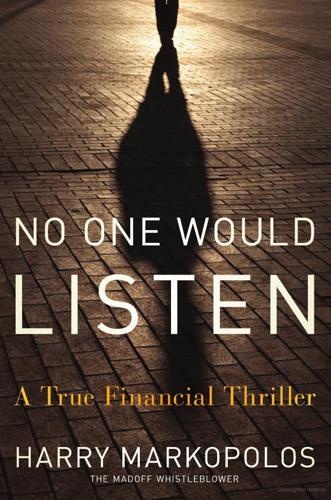
No One Would Listen: A True Financial Thriller
by
Harry Markopolos
Published 1 Mar 2010
When Neil began his internship, he assumed he was going to sit down at the trading desk and learn by participating in the business. Instead, I handed him a reading list of about 14 books and told him his job that summer was to read all of them so we could discuss them. Among the books on my list were Market Wizards by Jack Schwager (New York Institute of Finance, 1989); Justin Mamis’s The Nature of Risk (Addison-Wesley, 1991); and Minding Mr. Market (Farrar Straus & Giroux, 1993) by James Grant. My objective was to provide him with the education he wasn’t going to get in an academic curriculum. Although I don’t dislike business schools, I believe half of what they teach students will be obsolete within five years and the other half is just outright false.
…
I knew about the world’s biggest hedge funds: George Soros’s Quantum Fund, Julian Robertson’s Tiger Fund, Paul Tudor Jones’s Tudor Fund, Bruce Kovner’s Caxton Associates, and Lewis Bacon’s Moore Capital. Everybody did, and we estimated they each managed about $2 billion. Both Neil and I had read Jack Schwager’s Market Wizards, which profiled the most successful investment managers, and Madoff wasn’t even mentioned. So when we started trying to figure out how much money Madoff was running we were stunned. Absolutely stunned. According to what we were able to piece together, Madoff was running at least $6 billion—or three times the size of the largest known hedge funds.
…
See also Casey, Frank; Chelo, Neil; Kachroo, Gaytri; Markopolos, Harry; Ocrant, Mike Madoff Investment Securities LLC, Madoff Securities Makefield Securities Maloney, Carolyn Mamis, Justin Manion, Edward: bounty program competency of frustration Harry Markopolos and Harry Markopolos meets Mike Garrity Harry Markopolos on Harry Markopolos visits Boston SEC position risk post Bernie Madoff arrest public acknowledgment of role support from Manion, Mary Ann Marcelino, Juan MARHedge Bernie Madoff interview in database reporting Market crash of 1987 Market intelligence Market makers Market timing Market timing cases Market Wizards (Schwager) Markopolos, Faith Markopolos, Harry: career broker experience at Darien Capital Management European trip fraud investigation beginnings fraud investigation efforts fraud investigation experience leaves Rampart post Bernie Madoff arrest at Rampart reverse engineering role of work future Congress congressional investigation congressional testimony Senate Banking Committee hearing early life background of early career of early life of early years of paternal lessons on right and wrong family carries gun to protect children of danger, concerns about family at risk Louie Markopolos marriage of threat response François de Flaghac friendships interview by friends Jonathan Sokobin Madoff investigation on Bernie Madoff Bernie Madoff confession activities plan to expose Bernie Madoff post Bernie Madoff arrest reverse engineering role of WSJ story meetings with Gaytri Kachroo John Wilke Mary Schapiro Mike Garrity Scott Franzblau opinions Bernie Madoff on on SEC SEC contact final submission to SEC SEC deposition second fraud complaint summary of reports to SEC by support for NY SEC office “The World’s Largest Hedge Fund Is a Fraud” visits SEC See also Casey, Frank; Chelo, Neil; de la Villehuchet, Rene-Thierry; Kachroo, Gaytri; Ocrant, Mike Markopolos, Louie Markopolos, Pam Massachusetts Securities Division Math error Matter Under Inquiry (MUI) McCarter & English McKeefrey, Mark Media leaks Medical frauds Mehta, Andre Merkley, Jeff Merrill Lynch Michael, Phil Michel, Prince Mick, Joe Military experience Minding Mr.
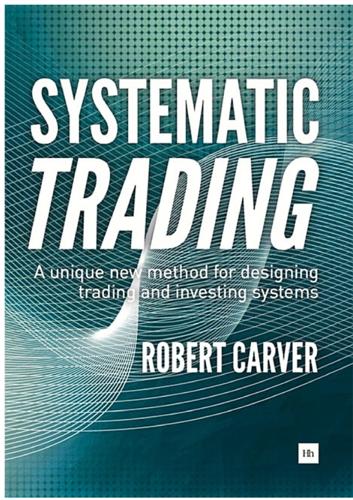
Systematic Trading: A Unique New Method for Designing Trading and Investing Systems
by
Robert Carver
Published 13 Sep 2015
Kaufman, 2013, John Wiley & Sons The bible of trading strategies. Great resource for trading rule ideas if you need them. Technical Analysis, Jack Schwager, 1995, John Wiley & Sons This, and the next book, are the best in a large crop of similar books. Compulsory if you want ideas for new technical trading rules. Fundamental Analysis, Jack Schwager, 1997, John Wiley & Sons See above. Compulsory if you want to trade fundamentals. Hedge Fund Market Wizards, Jack Schwager, 2012, John Wiley & Sons Interviews with many successful hedge fund managers. There are many useful nuggets of information in here. The chapter on Michael Platt is the most relevant to systematic traders.
…
The solution is to separate out the components of your system: trading rules (including explicit or implicit stop losses), position sizing, and the calculation of your volatility 70. The rules aren’t too bad, as they are purely systematic and very simple. However they are binary (you’re either fully in or out) which isn’t ideal, and having only one trading rule variation is also less than perfect. 71. This is recognised by most good traders. Here is Jack Schwager, in Hedge Fund Wizards, interviewing hedge fund manager Colm O’Shea: Jack: “So you don’t use stops?” Colm: “No I do. I just set them wide enough. In those early days I wasn’t setting stops at levels that made sense on the underlying hypothesis of the trade. I was setting stops based on my pain threshold.
…
The ETF Book, Richard Ferri, 2009, Wiley US book about ETFs. Staunch systems trader Trading Commodities and Financial Futures, George Kleinman, 2013, Prentice Hall One of many books that give a good introduction to futures trading. There are also some ideas for trading rules. A fine alternative would be any of the Schwager books mentioned above. Sources of free data For professional investors sourcing data is usually straightforward, but it can be harder for amateurs, especially those not wishing to pay. Sources of historical data that I’ve used are listed below. Website links are correct at the time of writing, but are subject to change.
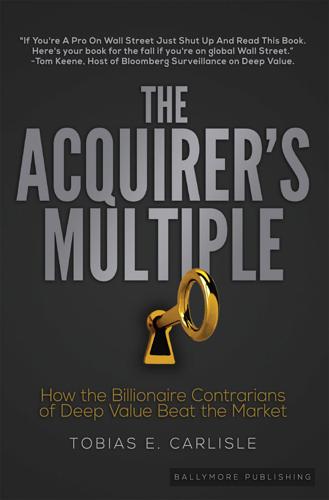
The Acquirer's Multiple: How the Billionaire Contrarians of Deep Value Beat the Market
by
Tobias E. Carlisle
Published 13 Oct 2017
If you go with a trend, the momentum always falls apart on you. So I buy companies that are not glamorous and usually out of favor. It’s even better if the whole industry is out of favor. Icahn zigs when the crowd zags. Billionaire trader Paul Tudor Jones is a well-known contrarian. In Jack D. Schwager’s Market Wizards (1989), he said: I learned that even though markets look their very best when they are setting new highs, that is often the best time to sell. To some extent, to be a good trader, you have to be a contrarian. Paul Tudor Jones zigs when the market zags. Billionaire investor Peter Thiele draws this diagram to describe the “sweet spot” for his chosen stocks: Sweet Spot: A Good Idea That Seems Like a Bad Idea Source: Paul Graham, “Black Swan Farming,” September 2012, Available at http://www.paulgraham.com/swan.html Thiele’s “sweet spot” is a good idea that seems like a bad idea to the crowd.
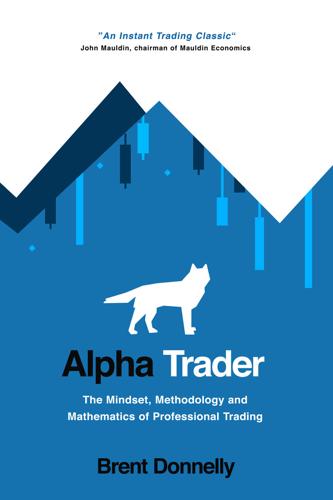
Alpha Trader
by
Brent Donnelly
Published 11 May 2021
Chapter 12 is called “Bringing it all together” and that’s where I will take you from start to finish; from trade idea to execution to take profit to post-trade analysis. But before we can bring it all together, we need to cover a few more topics. Next up: The importance of technical analysis, sentiment and positioning. 112. Jack Schwager, Market Wizards (1989). 113. Elliott Wave is an esoteric form of technical analysis. I studied it for a while and found its general approach useful but its specifics too subjective, arbitrary and confirmation bias-y. If you’re bullish: There’s a wave count for that! If you’re bearish: There’s a wave count for that too. 114.
…
And thank you reader, for dedicating the time to read my book. I appreciate it. Special thanks to Stephen K. Donnelly, for all the hours he poured into editing this project. Good luck. Be nimble. New Canaan, Connecticut 2021 APPENDIX A FURTHER READING BOOKS Trading classics Market Wizards (series), Jack Schwager (1989) Reminiscences of a Stock Operator, Edwin Lefèvre (1923) Luck vs. skill, process vs. outcome The Success Equation, Michael Mauboussin (2012) Thinking in Bets, Annie Duke (2018) Be disciplined Willpower, Baumeister and Tierney (2012) The Science of Self-Discipline, Peter Hollins (2017) The Disciplined Trader, Mark Douglas (1990) Behavioral finance bibles Thinking, Fast and Slow, Daniel Kahneman (2011) Irrational Exuberance, Robert Shiller (2000) Get organized The Seven Habits of Highly Effective People, Stephen Covey (1988) The Checklist Manifesto, Atul Gawande (2009) The Power of Habit, Charles Duhigg (2012) Be self-aware The Power of Now, Eckhart Tolle (1997) Breath, James Nestor (2020) The Hour Between Dog and Wolf, John Coates (2012) Get quantitative Fortune’s Formula, William Poundstone (2005) Superforecasting, Dan Gardner and Philip Tetlock (2015) Fooled by Randomness, Nassim Taleb (2001) Fooled by Technical Analysis, Michael Harris (2015) A Man for All Markets, Edward Thorp (2017) Risk, Dan Gardner (2008) How to Lie with Statistics, Darrell Huff (1954) BLOGS, PODCASTS AND NEWSLETTERS Aspen Trading daily and intraday trading newsletter, Dave Floyd Epsilon Theory website, podcast and newsletter, Ben Hunt and Rusty Guynn Exante blog on Substack, Jens Nordvig et al.
…
Thorp}, 248, 349, 492 mantra, trader, 461 market efficiency, 42, 484 market catalysts, 309—310 central bank action/speech, 309 company news, 309 in correlated market, 310, 311 domestic politics, 309 international geopolitics, 309 technical breakout, 310, 311 market events, overtrading and, 188—189 market orders, 70, 418 market structure, important markers of, 440—449 order versus chaos, 440—445 rangebound versus trending, 447—449 volatility, 445—447 See also fast markets, trading market structure, major changes to, 450, 476 adapting to, 449—451 Market Wizards (J. Schwager}, 161, 298, 491 math facts, counterintuitive, 247—259 Arcsine Law/random walk process, 251—254 averages, 250—251 bat and ball problem, 248—249 incomplete samples, 257—258 log returns, 249—250 non-linear relationships, 255—256 probability, 254—255 survivorship bias, 257—258 math literacy.
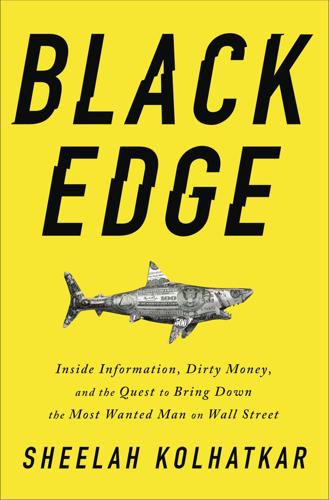
Black Edge: Inside Information, Dirty Money, and the Quest to Bring Down the Most Wanted Man on Wall Street
by
Sheelah Kolhatkar
Published 7 Feb 2017
At the time, if someone wanted to trade a stock option, they had to call up a broker at Gruntal or a handful of other firms, explain what kind of bet they wanted to make and over what time horizon, and basically accept whatever price they were given. By 1968, Icahn’s department at Gruntal was bringing in commissions of $1.5 million and was one of the most profitable at the firm. Icahn left that year to start his own company. Connie Bruck, The Predators’ Ball (Penguin, 1989), p. 151. so he could study the stock tables: Jack D. Schwager, Stock Market Wizards (HarperCollins, 2001), p. 269. the area became partial inspiration: Judith S. Goldstein, The Great Gatsby: Inventing Great Neck: Jewish Identity and the American Dream (Rutgers University Press, 2006), p. 3. Cohen would stumble home early in the morning with bundles of cash: Bryan Burrough, “What’s Eating Steve Cohen?”
…
Richard Behar, “The Shabby Side of the Street,” Fortune, March 3, 2003. Cohen started SAC with around $23 million: The number cited in some published accounts is $25 million; former employees I spoke with say it was $23 million or $24 million. especially those who’d played college sports: Jack D. Schwager, Stock Market Wizards (HarperCollins, 2001), p. 274. Steinhardt came into stock trading: Raised by a single mother in a gritty neighborhood in Brooklyn, Michael Steinhardt had both a brilliant investing sense and an unpredictable temper, which fueled his desire to make money. “I had an overriding need to win every day,” he once said.
…
Kiev’s other area of expertise was success: The son of a Bronx rabbi who’d gone to Harvard, Kiev wrote several books on depression and had been at the forefront of research into antidepressants, running clinical trials of Prozac and Zoloft. William Grimes, “Ari Kiev, Psychiatrist to Traders, Dies,” The New York Times, Nov. 30, 2009. some of his favorite phrases: Ari Kiev, M.D., Trading to Win (John Wiley & Sons, 1998). “You need to trade to win”: Schwager, Stock Market Wizards. Cohen called Kenny Lissak with some shocking news: The story of Lissak’s firing comes from Lissak, and was corroborated by several other people who were there at the time. SAC generated far more revenue: A version of this story is also recounted by Gary Sernovitz, “Edge and the Art Collector,” n+1, January 16, 2013.
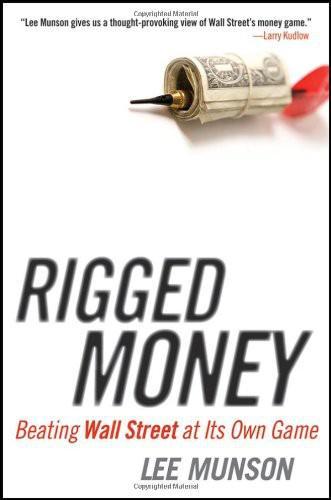
Rigged Money: Beating Wall Street at Its Own Game
by
Lee Munson
Published 6 Dec 2011
I have never seen a book purchased by so many and read by so few. Thank goodness it makes my life easier as a trader. If you want to understand the crowds, a word to the wise is sufficient. Market Wizards by Jack Schwager: A wildly entertaining book about people who have made huge sums of money investing, speculating, or just plain guessing. A compendium of interviews with the most successful operators of the 1980s, Market Wizards gives you comfort that as long as you have passion and will, it doesn’t matter how you invest or trade; you can find success. It is the ultimate motivational book. Andrew Lo: His views on risk budgeting are integral to how I manage money today going forward.
…
See NASDAQ 100 ETF R A Random Walk Down Wall Street rebalancing Registered Investment Adviser (RIA) reinvestment Reminisces of a Stock Operator research firms, independent research purpose third-party Revenue Act of 1978 RIA. See Registered Investment Adviser risk budgeting risk, level Rule 19b–3 S S&P 500, volatility versus San Francisco Earthquake scenarios, investment Schwab Affiliate Funds Schwager, Jack Schwartz, Martin Buzzy SEC. See Securities and Exchange Commission Section 28(e) sectors Securities Act of 1944 Securities and Exchange Commission Securities Reform Act of 1975 Security Analysis sell Ship of Gold in the Deep Blue Sea short sideways markets silver, gold versus small business, 401(k) and Smith, Adam soft dollars Sorkin, Andrew sounding board spiders Spitzer, Elliott Standard and Poor’s ETF Stevens’ power law sticky clients stock brokers stock exchanges, Amsterdam stock sales, investment banking and story super cycle sustainability, investment T tax-deferred investment plan third-party administrator (TPA) third-party research time Top Stocks TPA.
…
See Individual Retirement Account J joint-stock company junk bonds K Kinder, Gary L Lefèvre, Edwin Lehman Black Book liquidity liquidity providers Lo, Andrew London Gold Pool low-latency trading lower-risk environment M Malkiel, Burton market efficiency market maker market orders Market Participant Identifier (MPID) Market Wizards markets, sideways Markowitz, Harry master limited partnerships (MLPs) Master Settlement Agreement (MSA) May Day 1975 McClellan, Tom Meisler, Helene MLP. See master limited partnership moderate risk portfolio Modern Portfolio Theory (MPT) The Money Game Monopoly Morgan, J.P. MPID.

Living in a Material World: The Commodity Connection
by
Kevin Morrison
Published 15 Jul 2008
Sawyer, J. (2007) Nitrogen Fertilization for Corn Following Corn, Integrated Crop Management, February 12. Schlesinger, A. (2000) Who was Henry A. Wallace? The Story of a Perplexing and Indomitably Naı̈ve Public Servant, Los Angeles Times, March 12. Schmitz, C. (1986) The Rise of Big Business in the World Copper Industry 1870–1930, The Economic History Review, 39(3). Schwager, J.D. (1993) Market Wizards: Interviews with top traders, Collins Business. Schwieder, D. (1996) Iowa: The Middle Land, Iowa State Press. Simmons, M. (2005) Twilight in the Desert: The Coming Saudi Oil Shock and the World Economy, John Wiley & Sons, Inc., Hoboken. Simon, J.L. (1996) The Ultimate Resource 2, Princeton University Press.
…
He quickly found that he could do this more effectively sitting at a desk looking at a computer screen that had the prices of commodities and currencies flickering across, than standing in the pits (Schwager, 1993). Another commodities trader turned money manager is Paul Tudor Jones, who started out as a cotton trader on the New York Cotton Exchange in 1980. Jones – who was inspired to go into trading by an article written by Dennis – got his break in the cotton market through his uncle Billy Dunavant, who was head of the world’s largest privately owned cotton merchandiser (Schwager, 1993).4 By 1984, Jones had set up his own managed fund, Tudor Capital. Jones moved from the pits to the screen, where he expanded into equities, government bonds, currencies and financial derivatives and created one of the largest hedge funds in the world.
…
‘It was more like the present day hedge funds, as it went long and short and in the beginning it was focused on commodities futures as it was before interest rate or financial futures were launched,’ said Samuelson, who is credited with the famous quip ‘The stock market has predicted nine out of the last five recessions.’ Commodities Corporation was, in effect, one of the first commodity-focused hedge funds. Its successes were underlined further when another of its traders – Ed Seykota – developed one of the first computerized trading systems for managing clients’ money in futures markets (Schwager, 1993). The success of the company was to spot a good trader who could manage ‘leverage’; i.e. the amount of money a fund can borrow to fund its trade. The difference between then and now, adds Samuelson, is that there are a lot more smart people today. ‘I would say 30 years ago, there were not many very smart kids on the block, now there are quite a lot.
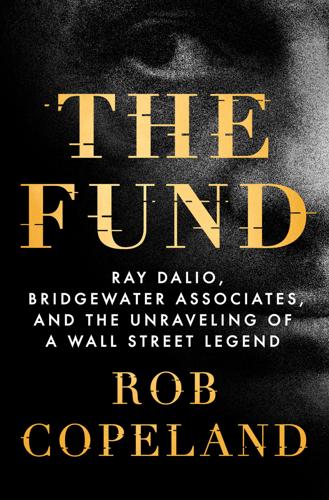
The Fund: Ray Dalio, Bridgewater Associates, and the Unraveling of a Wall Street Legend
by
Rob Copeland
Published 7 Nov 2023
newspapers: Ray Dalio, Principles: Life and Work (Simon & Schuster, 2017). as a caddy: “Ray Dalio, One of the World’s Wealthiest Men, Got His Start Carrying Clubs,” Golf, November 15, 2017. been a farm: “Long Island Journal,” New York Times, September 30, 1984. For $6 a bag: Jack D. Schwager, Hedge Fund Market Wizards: How Winning Traders Win (John Wiley & Sons, 2012). One frequent golfer: Ray Dalio, “Masters in Business,” interview with Barry Ritholtz, October 22, 2020. French burgundies: Elin McCoy, “How a Wall Street Exec Became the Ultimate Burgundy Wine Collector,” Bloomberg, December 2, 2015.
…
“an easy game”: Cassidy, “Mastering the Machine.” a new identity: Nassau County clerk’s office, author interview. “a capitalistic higher calling”: Daniel Huang, “Former NYSE Traders Look Back on the Old Days,” Wall Street Journal, September 1, 2014. he was enthralled: Ahuja, Alpha Masters. a bearish sign: Schwager, Hedge Fund Market Wizards. reconciling his intuition: Ibid. he once won: “In Memoriam,” St. Paul’s School Alumni Horae, Summer 2018. rarely less: “Building the Foundation: Business Education for Women at Harvard University: 1937–1970,” Baker Library at Harvard Business School. it would later become: Duff McDonald, The Golden Passport: Harvard Business School, the Limits of Capitalism and the Moral Failure of the MBA Elite (Harper Business, 2017).
…
He wrote articles: “A Perpetual Motion Machine: An Oral History of Bridgewater Associates’ Leadership Transition,” Leaders, October/November/December 2021. in notebooks: O’Keefe, “Inside the World’s Biggest.” tabulated the results: Hess, Learn or Die. He checked against history: Schwager, Hedge Fund Market Wizards. small bets: Hess, Learn or Die. market commentary letter: Ahuja, Alpha Masters. Bunker Hunt: Dalio, Principles (2017). calling himself an economist: The Unemployment Crisis and Policies for Economic Recovery, Before the Joint Economic Committee, Congress of the United States, 97th Cong., 2nd sess., October 15, 20, and November 24, 1982, statement of Raymond T.
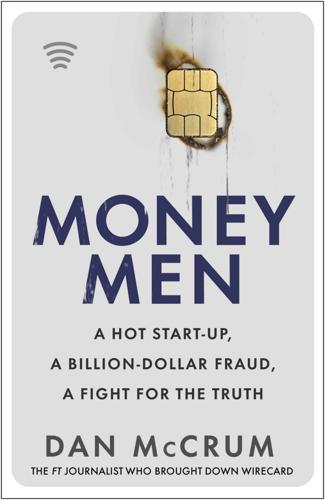
Money Men: A Hot Startup, a Billion Dollar Fraud, a Fight for the Truth
by
Dan McCrum
Published 15 Jun 2022
The son of immigrants, he was to be a doctor. In 1991, while on a particularly tedious course at medical school, he found himself killing time in a Holborn bookshop. On the counter were two investment classics: Security Analysis by Graham and Dodd, with a foreword by the billionaire Warren Buffett; and Schwager’s Market Wizards, a series of interviews with industry greats. Picking them up to browse, he was hooked. The tales were an inspiration, but when he marched into the university careers office the only job ad was a small thing for an unnamed investment firm. It asked candidates to fax an essay on economics.
…
To find a specific word or phrase from the index, please use the search feature of your ebook reader. 1A Mauritius fund 79–89, 115, 134, 250 advisors’ fees 88 Ernst & Young investigation 135 7995 transaction codes 16, 19, 42, 101 Absolute Poker 30 acai berry sellers 61 Acai Berry King see Willms, Jesse Achleitner, Paul 224, 231–2 Adyen 175 AIM market 91 Akhavan, Hamid ‘Ray’ ix, 118 and Animo Associates 278–9 and Marsalek 227, 278, 285 arrested USA 285 sentenced 304 Al Alam Solutions 245, 246, 249, 258, 272, 276–7, 301 and Allied Wallet 210 and Third-Party Acquiring 200–202, 221 rebrands as Symtric 277 unsecured loans/no income 286–7 Wirtschaftswoche on 261 Al Alawi, Kumail 69–70 Ali, Marsalek’s bribery contact 184 Alken Asset Management 119, 140 Allied Wallet 210–11, 304 Allscore Beijing, Wirecard and 250 Alphaville blog (FT) 52–3, 54, 91, 258 Camp Alphaville 52–3, 55–6, 96, 112–13 House of Wirecard series 91 and Ingenico/Wirecard 108 ‘Rabble’ 54, 96 Schillings on 119 Anderson, Pamela 223 Angermayer, Christian 198–9, 239 Animo Associates, Wickford 278–9, 283–4 APG Protection 255, 257n Arafat, Yasser 266 Ardiss, Katherine, and 1A/Hermes deal 83–4 Ashazi Services, Bahrain 67–71, 72–7 Asian Internet Gaming conference 57–8 Assion, Rüdiger, KPMG report meeting 290 Austrian coalition government collapse 2019 263 Austrian Interior Ministry, and refugees/stabilization 265–9 Austrian People’s Party 196 Aykroyd, Dan 21 Badel, Antoine 119, 140 BaFin and Earl 208–10, 294 and Palos 116 ban Wirecard shorting 180, 182, 186, 226, 240–41 blamed by MPs 302 criminal complaint against McCrum and Palma 195 on market manipulation 139, 172 reforms 305 Baker Tilly 85 Banc de Binary 211 Banco de Oro (BDO) 274 declares Wirecard documents spurious 294 Bandits xii ‘Bank of Oman’ 181 Bank of the Philippine Islands (BPI) 274 declares Wirecard documents spurious 293–4 Barber, Lionel xii, 54, 107, 141, 143–4, 169, 175, 176, 177, 205, 206, 224, 225, 247, 257, 259, 270, 299 and FTI 261–2 on FT bribery accusation 207 on Nick Gold tapes 220–23 on Novichok story 244–5 on Wirecard story 1–6 reviews McCrum and Zatarra 132 Barclay Brothers, Sunday Business 53–4 Barth, Hubert 167, 305 Batson, Chris 173 Bauer, Christopher ix, 45, 62, 249 and Third-Party Acquiring 200 denies running PayEasy 193–4 in Manila 58 meets KPMG 275–6 on Ashazi Services 70–71 Palma seeking 191–4, 207 reported dead 303 Bauer-Schlichtegroll, Paul ix, 14 and Electronic Billing Systems (EBS) 12–14, 17 and Flynt Publications 11–12 and InfoGenie reverse takeover 17 and Wagner 10 buys Wirecard for porn billing 12–13 moves to supervisory board 27 divests from Wirecard 31, 46 Bäumler-Hösl, Hildegard 183–6, 209–10 Bavarian police, 2015 Wirecard raid 101–3 Bayerische Wirtschaft 31 Bellenhaus, Oliver x, 10, 44, 261 and EBS 18–19 and prepaid credit cards 18 CardSystems Middle East 200–202 Al Alam meeting 276–7 and Allied Wallet 210 and Wirecard special audit 252 driving 39–40 personal habits 199–200 surrendered/co-operated 303 BellTrox 298–9 Bergermann, Melanie, on Al Alam 261 Roland Berger 233 Bergman, James, PayEasy 62 Berntsen, Gary 178 Bharara, Preet, hedge funds prosecution 35–6 Bijlipay card reader 80–81 Bill (purported Wirecard source) 244, 282 Bitcoin, Braun on 250 Blank Rome, and Wirecard self-review 102–3 Block, Carson xi, 93, 99 Doing Business in China for Dummies 37 Marsalek tries to bribe 118 on Casino supermarkets 112–13 on NMC Health 261 on Sino Forest 36–7 Bloomberg, Ali on bribing 184–5 Blue Ridge hedge fund 121 Bluetool 97 Bosler, Tobias 107 and the Turkish boxers 33–4 on Wirecard accounts 32–4 Bournewood (BVI entity) 97 Boyd, Roddy, ‘Great Indian Shareholder Robbery’ 146–7 Branston & Gothard 53–4 Braun, Dr Markus, Wirecard CEO ix, 25–34, 46–7, 60, 103, 110, 111, 145, 154, 172, 176, 229, 231, 234 on Ashazi 76–7 and Deutsche Bank 232 loan 147 and FT imaginary clients story 248–52 offers interview 259–60 orders Marsalek to get FT onside 230 intimidates short sellers 31–4 in French Riviera 197 and visit by heavies 197 Ingenico, revives purported bid 117–18 and IT systems 41–4 and KPMG report blames KPMG for delay 289 cash loan January 2020 288 Gill on 301–2 KPMG meeting 290 on publication 291 rejects supervisory board advice 289 suspicions of 287 not fired 294–5 resigns 296 arrested 303 management style 64 and McKinsey report 234–5 on Project Tiger 174, 175 SoftBank, and Wirecard 197–200, 203, 205, 237, 238 Vienna weekends 196–7 on Wirecard and Bitcoin 249–50 on Wirecard Asian non-offices 93 on Wirecard Brazil/Turkey MCAs 236 and Wirecard DAX Index membership 156, 159–60 on Wirecard total integrity 74–7 Zatarra Report 107 Kroll to investigate 117–19 Earl on 124 Wirecard London presentation 111 Braun, Sylvia 64 Bribery Act 207 Brinken Merchant Incorporations 44 British Virgin Islands and shell companies 44 Wirecard and 31 Bub Gauweiler 183 Buckminster Fuller question 75 Budde, Andreas 203 Buffett, Warren 65, 95 Bundestag, Wirecard inquiry 302 critical report on EY 305 MPs apologize to FT 302 Burtnick, Nelson, Marsalek on 62–3 Cambridge Analytica story 150, 241 Camp Alphaville 52–3, 55–6, 96, 112–13 CardSystems Middle East 200–202 Casino supermarkets 112–13 CellarDoor 53 CenturionBet 102n Cerberus 231 chargebacks nutraceuticals scam 47–9 Visa 2009 crackdown 49 China, Wirecard buying Allscore Beijing 250 Chinese frauds exposure 36–7 Chuprygin, Andrey xi and GRU 268 Citadelle Corporate Services, uncooperative 271, 272 Citigroup AsiaPacific deal with Wirecard 145–6, 152–3 Project Tiger summary papers sent to 167–8 Click2Pay (Wirecard online wallet) 13–19 Clifford Chance, and Manila trustee meeting 272–5 Cloudflare 109 CMS lawyers 17, 243 CNBC, Braun interview on FT and accounts 203–4 Coathanger King 244, 257, 282 Cobb, Oliver, on Wirecard 144–5, 236–7, 298 Cohodes, Marc 226 ‘Colin’ (Marsalek’s friend) x, 86–7, 88–9, 277, 278, 301 at P61 116 in Singapore 133–4 on Dr Rami 278 barbecue 279–80 Commerzbank 157, 292 accuses FT of market manipulation 172 retracts 174 losses 304 Committee to Protect Journalists 187 ConePay, purported creditor, non-existent 187–90 Connaught outsourcing company 94 Control Risks, and R&T information flow 202–3 Covid, travel issues 276 credit cards high-risk processing 43–4, 47 payments, post–2008 scrutiny 47 prepaid/unbranded, for Click2Pay e-wallets 17–19 Credit Suisse 23 and Wirecard/SoftBank bond 238 Crypto currency, Braun on 250 Dahmen, Martin (EY) 292 and Singapore audit 202–3 Al Alam meeting 277 and Manila trustee meeting 272–5 on Third-Party arrangements 251–2 ‘Dale’, whistleblower, on Wirecard UK & Ireland 245 Dallas investigation 227, 282 Daniel Stewart stockbroker 134n Dave the IT guy 109, 113, 123 Davies, Paul 238 DAX 30 28, 236, 287, 288 Dennis, Jonathan 213, 215, 216, 217, 241 Der Spiegel 195, 263 Deutsche Bank 3, 183, 196, 224, 305 and Braun loan 288 Samt and Marsalek decide to buy 231 Wirecard and 27 Dialectic Capital hedge fund 105 Dolan, Shane 261 Döpfner, Mathias 177 Dowson, Simon x, 44, 97, 278–9 Reuters investigation 122 Dun & Bradstreet 233 Duterte, Rodrigo 187, 221, 251, 273 Dyer, Geoff 194 Earl, Matthew xi, 94–5, 109–12, 185–6 and BaFin on Zatarra 109 case dropped 141–3 explains Wirecard to 208–10 avoiding Perring 123–4 Kroll on 119, 130 on Markus Braun 124 on Wirecard/Hermes 95, 97–100 reports to FBI on Wirecard critics hacking 208 reports to Mastercard on Wirecard 208 talks on Sky News 298 Toronto University on hacking gang 208, 298–9 under siege 127–31 faked photo of 257 outed on Twitter 127 phished/attacked online 131–2 shadowed 127–9 VisMas Files 124 EasyJet 233 Eaze 285 Edelman, KPMG report meeting 290 Eichelmann, Thomas 233, 235, 249, 294, 296 backs Braun and special audit 271–2, 283, 288–9 El Obeidi, Rami xi, 218–19, 301 Elder, Bryce 108, 117–18 Electronic Billing Systems (EBS) 12–14, 17, 18–19 Elvins, Hayley xi, 255, 256–7, 257n Emery, Bruce 144–5, 236 Enderle, Franz 183, 242 Ennismore hedge fund 91 Epsilon Investments 134 Ernst & Young 76, 77, 237, 248, 249 and CardSystems 201 litigation against 305 and NMC Health 261 and Wirecard Singapore 154, 167–8, 201–3 Wirecard/1A/Hermes investigation 135–8, 144 Wirecard special audit 249–50, 251–2 alerts BaFin 294 and Al Alam Solutions 201, 277 and Manila trustee meeting 272–5 completing audit 292–4 on Third-Party arrangements 251–2 Ernst & Young Canada 37 European Securities and Markets Authority 180 Exxon, on BellTrox 299 Federal Trade Commission, and Allied Wallet 210 Fieldfisher, and Singapore audit 203 financial crisis 2008 23–4 financial markets betting schemes 61 Financial Conduct Authority 99, 109, 255 Financial Times Alphaville see Alphaville Festival of Finance 112–13 Lex column 21–2 North American edition, Lex column 22–4 office, London 1–2 people xii moves back to Bracken House 205, 206–7 newsroom 169 surveillance discovered 173–4 office New York 20–24, 35–8 scepticism culture 37–8 Wirecard investigations/stories 1–7 and short-sellers set-up 212–19, 220–25, 228 blamed for Wirecard short attack 107 Braun orders Marsalek to get FT onside 230 declines Braun interview offer 259–60 FT’s QC blocks Project Tiger story 4–6, 168 puts questions to Wirecard 218 Singapore investigation story published 170–71, 174 accused of market manipulation 172 blames Zatarra 107 Wirecard suing for misuse of business secrets 194–5 Singapore/Philippines stories 236 Wirecard imaginary clients story 248–52 Wirecard action vs. 242–3 internal investigation 240–42 see also specific FT people Fleep messaging service 82 Flutter group 213, 241–2 Flynt, Larry, and Bauer-Schlichtegroll 11–12 Foster Mitchell, Victoria 261 Foulis, Patrick 21 Frankfurt stock exchange (Deutsche Börse) 25 Frankfurter Allgemeine Zeitung 180, 305 Freedom Party Austria 178, 263 Freis, James 294–6 Friend Finder 43 Fritsche, Klaus-Dieter 250 Froehlich Tours 191 FTI Consulting 111, 261–2 Full Tilt 30, 62–3 G2Pay payment processor 29–31, 102 G2Pay Dublin 39, 42–4 G2Pay Toronto 30, 42 begins to shrink 45–6, 59–60 ICC-Cal issues 49–51 Mastercard fines 42 miscoded 7995 transactions 42 upfront payment to Wirecard 30–31 Gattringer, Wolfgang, and Libya refugee project 266–9 General Electric 153 German civil legal system 242–3 German institutions, investor confidence in 93 German press supports Wirecard 110 Geschonneck, Alexander 251, 290 Getnow 278 GI Retail 105 GI Technology 86 Gibraltar, Wirecard and 31 Gill, Evelyn (Pav’s mother) 160, 162, 166–7, 168, 171, 306 Gill, Pav, Wirecard AsiaPacific legal counsel x, 152–60 and Ng investigate finance team 155–8 and whistleblower 154–5, 156, 158 Ng & Steinhoff, Telegram chats 157–8, 163 on Braun/Marsalek 301–2 on Wirecard Singapore 161–5, 171 ousted 158–60 Project Tiger copies 158–60 thriving 305–6, 307 Gold, Nick xii, 212–13, 229, 254–5 El Obeidi on 219 IVA agreed 306 Kroll to investigate 117–19 on FT about to expose Wirecard 213–17 recorded/quoted 221–2, 241–2 Goldman Sachs 249 Goomo travel firm 87, 88, 133, 135, 137 P61 HQ 116 Görres, Andrea, and Wirecard x self-review 102–3 special audit 252 Graham and Dodd, Security Analysis 95 Grant Thornton 30 Greenvale Capital 144–5, 236–7 GRU (Russia Military Intelligence) 263–70 Guardian 53 Gupta, Varun 89 Gustenau, Brigadier, on refugee project 267 Guttenberg, Karl-Theodore zu 250 Hallbergmoos, Wirecard office 9–11 Hamilton, Ben (re Kroll), fishing visit to Earl 129–30 Handelsblatt 177, 186, 219, 222, 229 Hanson, Nigel xii, 3–6, 106, 125, 170, 171, 175, 194, 205, 243 on McCrum’s correspondence hacked 121–2 on FT/short-sellers set-up 220–22 reviews McCrum and Zatarra 132 Harper Gray 174 Harris, Daniel, and Wirecard shorting rumour 182–3 Harris, James 115 Helms, Matthias (Wirecard due diligence) 135–7 Hempton, John xi, 55–6, 74, 188–9 Henseler, Alfons 234 Herbert Smith Freehills (law firm) 175, 220, 221, 223, 224 Hermes i-Tickets 78–89 Earl on 95–7 Ernst & Young investigation 135–8 Ramasamy on 111 Hodgson, Camila 149 ‘Hollins, Ian’ 96, 112, 123–4, 127, 226, 305 Honourable Artillery Company 52 House of Wirecard Alphaville series 91 HSBC 185 Hufeld, Felix 294, 305 Hume, Neil 54 Hustler, Flynt Publications, Bauer-Schlichtegroll and 11–12 ICC-Cal 27, 48 miscoded 7995 transactions 42 Merchant IDs crackdown 50–51 Wirecard cash stolen 50–51 IIFL Wealth 82 Inatec 46, 61, 63, 97, 116 InBev and Budweiser story 54 Indo-German Chamber of Commerce 250 InfoGenie reverse takeover 17 Ingenico purported bid for Wirecard 108, 117–18 Investors Chronicle 21 Israeli security Wirecard executives and 50–51 Iwersen, Sönke 219, 222 J-Capital Research 92–4, 98, 113, 121 ‘Jack’, whistleblower 166, 188 Jakab, Spencer 23 Jenkins, Patrick 141 Jilson (photographer) 187 Jon, on short sellers surveillance 254–7 Jones Day 130 Jones, Sam xii, 126 on FT office surveillance 173 on Marsalek, Libya, GRU and Wagner 263–70 Kalixa, Senjo buys 138 Kaminska, Izabella 223–4 Kepler Cheuvreux 292 Khalaf, Roula 173, 259–60, 270, 302 Khan, Imran 1 Khawaja, Ahmad ‘Andy’ 210, 304 Kilbey, Gary xii, 115, 306 and Marsalek 147–51 on Wirecard shorting rumour 181 on Wirecard story news leak 170–71 Kilbey, Tom xii, 147, 148–51 and Marsalek 182 Kirch, Leo 183 Kirch Media 109–10, 142 Kirk, Stuart (US Lex team) 35 Kleinschmidt, Kilian on Marsalek 264–5 reaction to Marsalek and Libya 269–70 testifies 302 Klestil, Stefan 232–3, 234 Knöchelmann, Dietmar x, 29–31, 45 KPMG 26 on 1A/Hermes 85, 88 Wirecard special audit 249, 250–51 Al Alam meeting 277 complains of obstructions/delays 287 Manila trustee meeting 272–5 on PayEasy client non-existence 276 PayEasy meeting 275–6 seeking Wirecard Singapore cash 271–6 draft report to supervisory board 286–90 enforces deadline 290 final report, no evidence for Third-Party Acquiring 291 Braun’s spins on 285, 287, 291–2 Kramp-Karrenbauer, Annegret 231 Krisper, Stephanie, on Marsalek contact 264–5 Kroeber, Susannah, on Wirecard Asian offices 92–4 Kroll investigations 58 accusatory letter to Earl 129–30 seeking Zatarra, 117, 119 Kukies, Jörg 231, 249–50 Kurniawan, Edo x and Ernst & Young 135–8, 154 on cash definition issues 259 FT and 6–7, 174 head of Wirecard Asia Pacific finance team 138, 153–8, 161, 170, 172, 210, 246, 301 and Hong Kong unit accounts 154 on ‘round tripping’ funds 155–8 paperwork 258 Wirecard supports 170 and Project Tiger 158, 165–6 vanished 176, 303 Kurz, Sebastian 196, 266 Lauterbach, Anastassia 233–4, 235, 249, 287 Lehman Brothers 22–3, 47 Leitz, Sven-Olaf 251 Ley, Wirecard CFO ix, 28, 31, 46, 50–51, 60, 64, 78, 79, 136, 142, 153, 236, 291 on Deutsche Bank 239 and Hermes 84, 85 and Kirch Media 109–10 on Wirecard Asian non-offices 93 Wirecard cash flow statement 90–91 and Wirecard self-review 102–3, 104 confronts Greenvale 144–5 KPMG report meeting 290 arrested 303, 304 Liao, Bob 139 Libya Marsalek and 116 cement plants 116, 135, 151, 247, 267, 268 creating strong border force 269 refugees as guest workers 266–9 Kleinschmidt’s reaction to 269–70 GRU and 268–9 Rami El Obeidi 255–6 Lincolnshire police 125–6 Linklaters 88 Lipscomb, Dashiell 200 Lordship Trading blog 95 Louis XIII project 231, 239 M’Cwabeni, Vuyiswa 233, 234 Macquarie, on Wirecard 139 Madoff, Bernie, Ponzi scam 23–4 Mail on Sunday 261 Majali, Yousef 105, 121 Manager Magazin allegations 261 Eichelmann interview 271–2 on forensic audit 249 on FT bribery 207 on Wirecard board 234–5 Maria, Tolentino’s paralegal 273 Marques, Eduardo xi, 299 on Senjo and 1A 146 on Wirecard and SoftBank 210 shorts Wirecard stock 59 Marsalek, Jan (Wirecard chief operating officer) ix, 39, 40, 46–51, 64, 153, 154, 172, 226 and 1A fund 115 Al Alam meeting 276–7 on Ali, FT and Bloomberg bribery scam 183–6 and Akhavan 278 whistleblower on 285 and Animo Associates 278–9 on Burtnick hiring 62–3 on Cambridge Analytica 150 and CardSystems Third-Party Acquiring 200–203 and Chuprygin; Gustenau; Gattringer 268–9 and Click2Pay 11, 13–16 ATM cards for e-wallets 17–19 on Deutsche Bank 239 and Dr Rami 278 on Elon Musk/Tesla 151 and Nick Gold tapes 217–19 Kilbeys, pays off 151 suspected of story news leak 170 G2Pay pressured 46 and Gold 213–14 and Goomo travel firm 87, 88–9 and Hermes i-Tickets/1A 78–89 and fake clients special audit 251–2 at Colin’s barbecue 279–80 crying drunk 279–80 and FT fake clients story 248–52 Third-Party Acquiring cover story 258–9 defends Third-Party business 234, 235–6 on Inatec 61 on Ingenico purported bid 108 and IT systems 41–4 on Israeli politics 178–9 on KPMG report publication 291 KPMG report meeting 290 post-audit, offers raw data 287–8 stalls 294–5 suspended not fired 294–5 fired, police charge 296 disappears to Minsk 300 and Kurniawan 136–8 on Libya 151 and refugees as guest workers 266–9 cement plants 116, 135, 151, 247, 267, 268 on creating strong Libya border force 269 Manila trustee meeting 273–5 management/lifestyle 64 extreme Covid precautions 277–8 extravagance, employee on 177–8 new information on 263–70 office 115–16 office, Samt on 252–3 P61 villa 115–16, 269, 277, 278, 280 questions about 247 Sabines (two assistants) 115, 116, 269, 279, 300 on McCrum 149 McKinsey report on 234, 235 and Novichok documents 303 recipe 179–80 story 244 and nutraceuticals chargebacks scam 47–9 PayEasy meeting 275–6 police take inbox archives 101–3, 104 Rami El Obeidi link 256 ‘Ray’, correspondence from 178 and Samt 229–30 decide to buy Deutsche Bank 231 on Senjo 138 in Singapore 134–5 and Singapore audit 201–3 in Project Tiger papers 166 on Singapore cash new Manila trustee 272 Turkey money replaces Singapore 278 and Smaul 65–6 nutraceutical processing deal 59–63 on Syria visit with Russian military 266 on Telegram 150 on Wirecard misunderstood 149 and Zatarra Report 114–19 suspects UK leak 116–17 targets McCrum and Palos 116–19 tries to bribe Carson Block 118 Marsalek, Viola 252, 253 Martiradonna, Francesco 102n Mastercard 43 fines G2Pay 42 Project Tiger summary papers sent to 167–8 compliance person 118–19 on Wirecard 208 Mateschitz, Dietrich 15 Mattias, Wulf 232–3, 249, 271 MCA Mathematik (Greenvale alias) 236–7 on forensic audit 249 McCrum, Charlotte (author’s wife) 22, 55, 126–7, 165, 174, 205, 256, 285, 297 targeted by Wirecard 175 McCrum, Dan early career 20–24, 35 New York FT office 20–24, 35–8 joins Alphaville 55–6 moved to FT Lex 141, 143–4 FT internal investigation 240–41 personal life 22–3, 105, 120, 140–41, 165, 205, 225, 227–8, 285, 297–8, 299 improves home security 126–7, 131–2 surveillance fears 257–8 and Nick Gold tapes 220–25, 228 Wirecard investigations/stories Animo Associates 283–4 and Ashazi Services, Bahrain 67–71, 72–7 blog post on Wirecard short attack 106 Exocet on fake clients 247–8, 272, 300 and Macquarie Wirecard meeting 139–40 following-up Wirecard Third-Party Acquiring 221 Marsalek said to intend bribe 147–50 and Palma, accused of bribery and threats 207 criminal case dropped 302 and Pav Gill 161–5 Singapore story publication 1–7 telephone interview with Braun 74–7 testifies to Bundestag inquiry 302 and Zatarra accusations against 127, 132 correspondence hacked 121–2, 125–6 decides to move on 132 Kroll to investigate 117–19 Marsalek’s security to investigate 116–19 meets with Earl and Perring 100 Schillings on 119 on whistleblowers protection 302–3 see also specific people or stories McKinsey 35, 233 Wirecard compliance review 252 on Wirecard Third-Party business 234, 235 and Wirecard/Deutsche Bank 239 Merchant Category Codes 16 Merchant ID (MID) 16 Visa/Mastercard and 43 Merkel, Angela 250 Metropolitan Police 208 Mishcon de Reya 127, 142, 143 Moody’s 237 Mubadala, takes over SoftBank loan to Wirecard 238 multilevel marketing pyramid schemes 61 Munich public prosecutor 183 Munich Security Conference 231 Murphy, Gary 226–7 Murphy, Paul xii, 52–5, 106, 115, 143–4, 170, 171, 172, 177, 194, 211, 225, 228, 237, 245, 246–7, 263, 278, 297, 298, 299, 302, 306 and Ashazi Services story 67, 68, 69, 73 has Alphaville IT secured 125 at Alphaville’s vaudeville 223–4 and Coathanger King/Bill 282–3 on FT/short-sellers set-up 220–22 denies shorting rumour 181 frightens Animo Associates director 279 FT internal investigation 241–2 Marsalek said to intend bribe 147–51 on SoftBank and Wirecard 205–6 spy story published 260 and surveillance informers 254–8 and Wirecard source 243–4 on Wirecard story 1–6, 100 Naheta, Akshay 198, 210, 237, 238 Narayanan, Veerappan 88 Nasdaq exchange 24 Neteller 16, 29 Neuer Markt Frankfurt 17 Neukeferloh, Grasbrunn, Wirecard move to 14 Newcastle Building Society prepaid card unit 66 Newton, Helmut 14 Ng, Royston 153, 154, 209 and Gill investigate finance team 155–8 Marsalek implicates in Bloomberg scam 185–6 Nikkei 144, 194, 205, 206, 222 Nix, Alexander 241 NMC Health 261 Novichok documents leaked 303 GRU and 268 Marsalek story 244 recipe, Marsalek and 179–80 Novum stockbroker 134n nutraceuticals charges scam 47–9 Marsalek deal with Smaul 59–63 O’Connor, Sarah 149 O’Murchu, Cynthia xii, 149, 261, 282 O’Sullivan, Henry x, 117, 249, 250, 271, 278 arrested 304 and Hermes i-Tickets 78–89 and Senjo loan 138 in Singapore 133–4 and Third-Party Acquiring 200 WalPay 102 Odey, Crispin 257 Öner, Ahmet 33–4 online casinos/gambling and banks 16 and Click2Pay 14–16 and Wirecard 14–17 countries outlawing 45–6 USA bans 2006 29 online poker legal grey area 29 US indictment 2011 62–3 7995 transactions 42–3 online porn billing, Bauer-Schlichtegroll and Wirecard 12–13, 43 online wallets 13, 16–17, 29 Orbit travel agency 87, 88 Organization for the Prohibition of Chemical Weapons 179 Ortiz, Carlos, and Wirecard self-review 102–3 Osterloh, Martin 47–9, 57–8, 199, 301 P61 (Marsalek’s villa) 115–16, 269, 277, 278, 280 Pacha club 15 Pacquiao, Manny 304 Pago (Deutsche Bank) 27 Pal, Alasdair 298 accusations against 127 on Dowson paperwork factory 122 Palldium phase 2 surveillance dossier 257 Palma, Stefania (FT) xii, 176, 243, 276, 299, 300 accused of bribery and threats 207 criminal case dropped 302 finds whistleblower Jack 166 in Singapore and Kuala Lumpur 165 meetings with Gill and Evelyn 163–4 hostile-environment training 193 seeking Christopher Bauer 191–4 seeking ConePay 187–90 Palos, Brett 116–19, 257 Paolucci, Paul 208 Pauls, Heike, analyst xii, 292, 304 accuses FT of market manipulation 172 retracts 174 on ‘buying opportunity’ 175 Paulson, John, and Sino Forest 36–7 PayEasy Solutions 58, 62, 70–71, 258, 272, 301 and Third-Party Acquiring 200 KPMG and 249, 275–6 no information 191–4 unsecured loans/no income 286–7 PayPal 2 Perring, Fraser xii, 95, 96–7, 109–13, 179, 226, 257 faces prosecution for Zatarra 141 further activities 305 on ‘Ian Hollins’ 96, 112, 123–4, 127, 226, 305 Kroll on 119 on Wirecard/Hermes 95, 97–100 outed on Twitter 127 reports demand to name Zatarra people 124–5 wants expenses 123–4 Perry, Leo xii, 210, 299 on Wirecard 67, 73, 90–92, 139–40 Philippines Wirecard new trustee meeting 272–5 Wirecard purported partners 187–94 Palma’s story published 195 Poker Stars 30, 42n Pollard, Brett 261 Ponzi scam (Madoff) 24 Portsea Asset Management 226 Prima Vista Solusi 66 Project Panther 239 ‘Project Tiger’ 155–8 Gill saves copies 158–60 information flow 202–3 summary papers sent to banks/auditor 167–8 taken over by Marsalek 157–9 ProtonMail 178, 227 Puck, Wolfgang 134, 148 Putin, Vladimir, foreign policy speculative 269 matryoshka doll 252 Quadir, Fahmi 225–7 on Akhavan and Marsalek 285 attacked 281–2 and Marsalek whistleblower 226–7 Safkhet Capital, FBI source 281–2 on Wirecard Pennsylvania 226 Quintana-Plaza, Susana 233, 289 Quirk, Mark 278–9, 284 Rajah & Tann, Project Tiger 155 Gill seen with McCrum 162 interim report 167 information flow 202–3 Report 177, 243 Braun on 287 Ramasamy, Ramu and Palani ‘The Boys’ x, 79–80, 81–9 at London presentation 111 blamed for Hermes accounts 137 Wirecard falling-out 155 Rami El Obeidi, Dr and Marsalek 278 and short sellers surveillance 255–6 sends FT flowers 260–61 Randall, Jeff 53 Raynor, Greg xi, 255, 257n Mancunian facilitator 213–17 refugees/stabilization, Austrian Interior Ministry, and 265–9 Reichert, Jochen, on Zatarra weaknesses 109–10 Reserve Bank of India 83 Reuters, on Dowson paperwork factory 122 Reynolds Porter Chamberlain (RPC, law firm) 107, 222, 224–5, 228, 240–2 on Zatarra Report 107 FT internal investigation 240–2 Robert Smith 261 Roddy 95–7, 112–13, 123 at Wirecard London presentation 111–12 on Wirecard/Hermes 95, 97–100 seeks advice 99, 100 sees vehicles shadowing Earl 129 Roland Berger 233 RP Richter (auditor) 30 Rubie, Saif 213, 216, 217 Russian diplomat, at Colin’s barbecue 279–80 Russian military in Syria 266 Novichok 179–80, 244, 268, 303 Wagner Group soldiers 268–9 Russian Military Intelligence (GRU) 263–70 Sabines (Marsalek’s two assistants) 115, 116, 269, 279, 300 Safkhet Capital 281–2 Samt, Mr (Marsalek’s PR) x, 217–19, 229–30, 231, 252–3 Santego Capital 81 SAP 233 Schäfer, Daniel 177 Schillings law firm 91 blames FT for Wirecard short attack 107 letters to FT on Zatarra 132 on McCrum/Alphaville 119 on Wirecard story 4–6, 170–71 replaced 175 Schneider, Dagmar 279 and KPMG special audit 251, 252 KPMG report meeting 290 Manila trustee meeting 273–5 Schneider, Klaus (SdK), on Wirecard accounts 34 Schütt, Michael 59, 97 Schütz, Alexander 196–7, 198 on FT 196–7 apologizes 304–5 Schwager, Market Wizards 95 SdK (Schutzgemeinschaft Der Kleinaktionäre) on Wirecard 31–4 Sender, Henny 24 Senjo 134, 138, 258, 272, 301 and Third-Party Acquiring 200, 202 buys Kalixa 138 KPMG to consider 249 unsecured loans/no income 286–7 Sewing, Christian 231, 232 ShadowFall Research 185, 209 Shah, Amit 82–8 Shanmugaratnam, R.
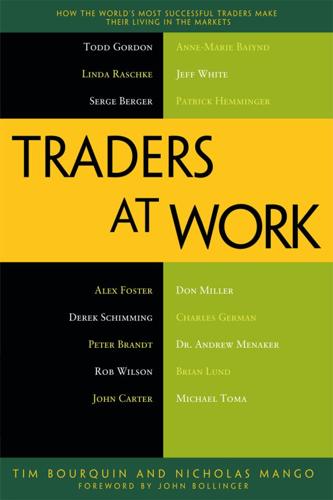
Traders at Work: How the World's Most Successful Traders Make Their Living in the Markets
by
Tim Bourquin
and
Nicholas Mango
Published 26 Dec 2012
In the early 1990s, Raschke became a registered Commodity Trading Advisor (CTA) and started LBRGroup, Inc., a professional money management firm. In addition to running successful CTA programs, she has been principal trader for several hedge funds and has run commercial hedging programs. She was recognized in Jack Schwager’s book, The New Market Wizards (John Wiley & Sons, 1992), and in Sue Herera’s book, Women of the Street (John Wiley & Sons, 1997). Raschke has been active with the Market Technicians Association for many years and has lectured in over 30 countries. She is well-known for her book with co-author Laurence Connors, Street Smarts: High Probability Short-Term Trading Strategies (M.
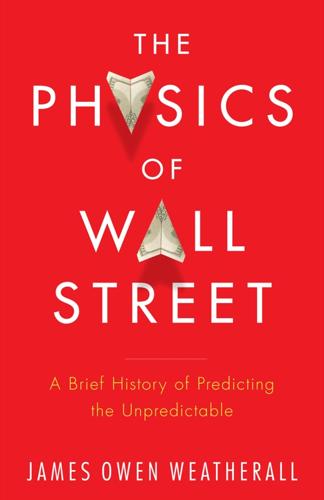
The Physics of Wall Street: A Brief History of Predicting the Unpredictable
by
James Owen Weatherall
Published 2 Jan 2013
In The Intersection of History and Mathematics, ed. J. Dauben, S. Mitsuo, and C. Saski. Basel: Birkhäuser. Schultze, Charles, and Christopher Mackie, eds. 2002. At What Price? Conceptualizing and Measuring Cost-of-Living and Price Indexes. Washington, DC: National Academies Press. Schwager, Jack D. 2012. Market Wizards: Interviews with Top Traders. Hoboken, NJ: John Wiley and Sons. Seed magazine. 2006. “James Simons: The Billionaire Hedge Fund Manager Discusses the Impact of Mathematics on His Former Life in Academia and His New One in Finance.” September 19. Sepinuck, Stephen L., and Mary Pat Treuthart, eds. 1999.
…
Beating the Dealer “The year is 1961”: I have taken some liberties with this opening story (Des Moines; whiskey sours), but the basics are correct; it is based on an autobiographical essay (Thorp 1998). More generally, the biographical material on Thorp is from that essay, as well as Thorp (1966, 2004), Poundstone (2005), Patterson (2010), and Schwager (2012). In addition, I interviewed Thorp, and he was kind enough to read and comment on an earlier draft of this chapter. “. . . the 1973 book A Random Walk Down Wall Street . . .”: This is Malkiel (1973). “. . . about $850 in 2012 dollars . . .”: This calculation is based on the Bureau of Labor Statistics’ online inflation calculator at http://www.bls.gov/data/inflation_calculator.htm
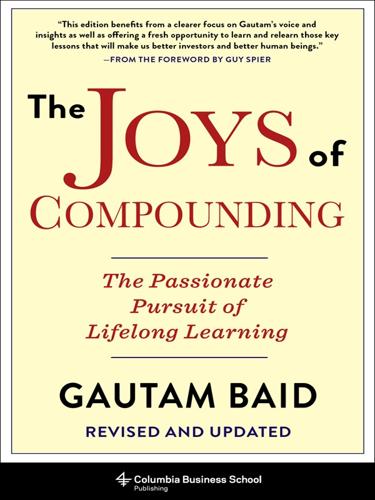
The Joys of Compounding: The Passionate Pursuit of Lifelong Learning, Revised and Updated
by
Gautam Baid
Published 1 Jun 2020
Quoted by Morgan Housel, Twitter, June 15, 2017, https://twitter.com/morganhousel/status/875547615592665088. 7. Charlie Munger, “A Lesson on Elementary, Worldly Wisdom as It Relates to Investment Management and Business,” Farnam Street (blog), 1994, https://fs.blog/a-lesson-on-worldly-wisdom/. 8. Jack Schwager, Hedge Fund Market Wizards: How Winning Traders Win (Hoboken, NJ: Wiley, 2012). 9. Quoted in Karen Damato, “Is Your Manager Skillful…or Just Lucky?” Wall Street Journal, November 2, 2012, https://www.wsj.com/articles/SB10000872396390444734804578062890110146284. 10. Benjamin Graham and Jason Zweig, The Intelligent Investor: The Definitive Book on Value Investing, rev. ed.
…
Saletta, Chuck. “4 Steps to Getting Rich from Warren Buffett’s Right-Hand Man.” Business Insider, May 31, 2013. http://www.businessinsider.com/charlie-mungers-secrets-to-getting-rich-2013-5. Schroeder, Alice. The Snowball: Warren Buffett and the Business of Life. New York: Bantam, 2009. Schwager, Jack. Hedge Fund Market Wizards: How Winning Traders Win. Hoboken, NJ: Wiley, 2012. Sellers, Patricia. “Warren Buffett and Charlie Munger’s Best Advice.” Fortune, October 31, 2013. http://fortune.com/2013/10/31/warren-buffett-and-charlie-mungers-best-advice. Seneca. Letters from a Stoic. London: Penguin, 1969. ——.
…
Kelly and popularized by the practical success of Ed Thorp, the Kelly criterion is a formula used to determine the optimal bet size for a given set of probabilities and payoffs. Although the formula can be stated in several ways, the following expanded version appeared in Thorp’s interview in the book Hedge Fund Market Wizards: where: F = Kelly criterion fraction of capital to bet, PW = probability of winning the bet, PL = probability of losing the bet, $W = dollars won if bet is won, and $L = dollars lost if bet is lost.8 If an individual knows the odds and payouts of a given bet with precision, the Kelly criterion bet size will maximize capital over the long run.
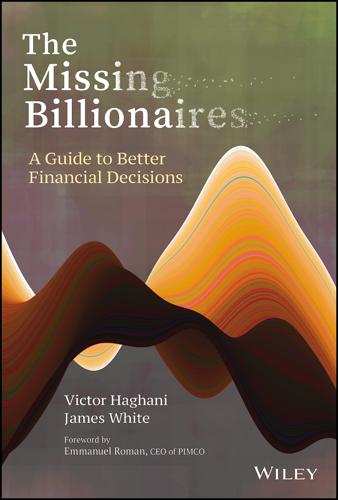
The Missing Billionaires: A Guide to Better Financial Decisions
by
Victor Haghani
and
James White
Published 27 Aug 2023
Another close relation, more like a sibling than a cousin, that produces similar historical results and shares the simplicity of momentum is the “stop‐loss” approach to investing. It is almost universally endorsed by successful macro hedge fund traders, including George Soros, Paul Tudor Jones, Louis Bacon, and Alan Howard. In Jack Schwager's series of Market Wizard books, he finishes each interview with the question: “What advice would you give someone aspiring to be a successful trader?” More than three‐quarters of his subjects answered with the dictum: “Cut your losses early; let your profits run.” Exhibit 5.6 Excess Earnings Yield Dynamic Versus Static Asset Allocation Using Momentum as Risk Proxy: US Equities and 10‐year TIPS 1900–2022 International Diversification We've used the US stock and bond markets as the only two assets in our analysis of dynamic asset allocation.
…
Petersburg Paradox, 7, 70, 72, 73t, 74, 75, 111, 278, 301 Salomon Brothers, 5, 46, 118–121, 347n1, 278, 289, 298, 315–316, 327, 328, 331–333 Samuelson, Paul, 8, 344n2, 96–98, 100, 103, 113, 132, 135–136, 351n6 Satisficing, 104n Savage, Jimmie, 104, 187 Saving: negative vs. positive rates of, 194 regulation of, 337 Savings crisis, 166 Scholes, Myron, 32n, 351n9 Schwager, Jack, 61 Schwed, Fred, Jr., 117, 260 Seinfeld, 309–310 Separation theorem, 231–232 Series I Savings bonds, 171 Sharpe, William, 56, 215–216, 344n2 Sharpe ratio, 54, 56–60, 62, 82, 89–92, 177, 232, 247, 255, 263, 304 Sharpe's arithmetic, 215 Shiller, Robert, 240, 295 Sizing, 4–6 “Goldlocks” bet‐sizing, 33–34, 33t, 35 and lift vs. drag, 31–33 of stock market exposure, for the long term, 313–314 Skew, 63 Smart Beta strategies, 217, 219 Smith, Adam, 72 Smoothed spending policies, 162 Social Security, 6 Soros, George, 61 S&P 500, see Standard & Poor's 500 SpaceX, 43 Special situation trades, 227–229 Spending, regulation of, 337 Spreadsheets, using, 10 Standard deviation: and “Goldlocks” bet‐sizing, 36 as measure of risk, 34–35 in Sharpe ratio, 57 Standard & Poor's 500 (S&P 500), 143t, 257, 258, 260, 307, 311–313 Stern report, 156 Stock market crashes, 207.
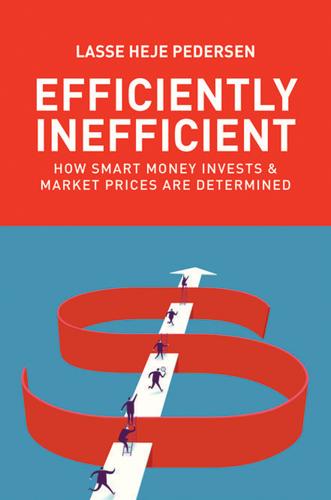
Efficiently Inefficient: How Smart Money Invests and Market Prices Are Determined
by
Lasse Heje Pedersen
Published 12 Apr 2015
D. (1938), “Annual Survey of Economic Theory: The Theory of Depreciation,” Econometrica 6, 219–241. Sadka, Ronnie (2010), “Liquidity Risk and the Cross-Section of Hedge-Fund Returns,” Journal of Financial Economics 98, 54–71. Scholes, M., and J. Williams (1977), “Estimating Betas from Nonsynchronous Data,” Journal of Financial Economics 5, 309–327. Schwager, Jack D. (2008), The New Market Wizards: Conversations with America’s Top Traders, John Wiley & Sons, Hoboken, NJ. Shefrin, H., and M. Statman (1985), “The Disposition to Sell Winners Too Early and Ride Losers Too Long: Theory and Evidence,” Journal of Finance 40, 777–790. Shiller, R. J. (1981), “Do Stock Prices Move Too Much to Be Justified by Subsequent Changes in Dividends?”
…
They take the view that the overall stock market will go up or down, that inflation will lead to a spike in gold prices, or that emerging-market currencies will rise or collapse. Some global macro traders take large positions, as is clear from the following quote from Stanley Druckenmiller, who learned it from Georges Soros (Schwager 2008): When you have tremendous conviction on a trade, you have to go for the jugular. It takes courage to be a pig. Others go for a more diversified and risk-managed approach, arguing instead, Bulls get rich, bears get rich, but pigs get slaughtered. According to this saying, you can make money taking long positions (bulls) or taking short positions (bears), but if you don’t control your risk (pigs), you end up going out of business.

Flash Crash: A Trading Savant, a Global Manhunt, and the Most Mysterious Market Crash in History
by
Liam Vaughan
Published 11 May 2020
Lessons from the Battle of the Bund,” Working Paper Series No. 766, European Central Bank, June 2007. Liffe’s share of the all-important: Cantillon and Yin, “How and When Do Markets Tip?” used to call him “The Chav”: “Chav” is a British insult meaning someone of low social class. classic texts: Market Wizards by Jack D. Schwager contains interviews with high-profile traders. It was first published by HarperCollins in 1989. Reminiscences of a Stock Operator (Wiley), first published in 1923, is a fictionalized account of the life of trading legend Jesse Livermore by Edwin Lefèvre. Steidlmayer on Markets: Trading with Market Profile examines the use of charts to recognize patterns and identify trading opportunities.
…
We used to call him ‘The Chav.’ ” For eight weeks, Nav’s group was taken through the theoretical underpinnings of trading in IDT’s pokey classroom. A former Liffe trader led classes on economics, markets, financial products, and risk management, and set homework assignments reading classic texts like Market Wizards, Reminiscences of a Stock Operator, and Steidlmayer on Markets. Goldberg gruffly explained the nuts and bolts of placing and canceling trades using the trading software. Paolo regaled the group with war stories. They learned how to read charts and gauge market profile, and discussed the importance of psychology by examining the crowd effect, the history of various market crashes, and seventeenth-century Holland’s tulip mania.

Fooled by Randomness: The Hidden Role of Chance in Life and in the Markets
by
Nassim Nicholas Taleb
Published 1 Jan 2001
He liked the link between being a skeptical empiricist and disliking monopolies on knowledge by institutions like governments and universities. I am grateful to Hollywood agent Jeff Berg, an enthusiastic reader, for his insights on the wild type of uncertainty that prevails in the media business. I have to thank the book for allowing me to have insightful dinner discussions with Jack Schwager, who seems to have thought of some of the problems longer than anybody alive. Thank You, Google The following people have provided me with help on this text. I was very fortunate to have Andreea Munteanu as an incisive reader and valuable sounding board; she spent hours away from her impressive derivatives job checking the integrity of the references on Google.
…
NERO TULIP Hit by Lightning Temporary Sanity Modus Operandi No Work Ethics There Are Always Secrets JOHN THE HIGH-YIELD TRADER An Overpaid Hick THE RED-HOT SUMMER Serotonin and Randomness YOUR DENTIST IS RICH, VERY RICH Two A BIZARRE ACCOUNTING METHOD ALTERNATIVE HISTORY Russian Roulette Possible Worlds An Even More Vicious Roulette SMOOTH PEER RELATIONS Salvation via Aeroflot Solon Visits Regine’s Nightclub GEORGE WILL IS NO SOLON: ON COUNTERINTUITIVE TRUTHS Humiliated in Debates A Different Kind of Earthquake Proverbs Galore Risk Managers Epiphenomena Three A MATHEMATICAL MEDITATION ON HISTORY Europlayboy Mathematics The Tools Monte Carlo Mathematics FUN IN MY ATTIC Making History Zorglubs Crowding the Attic Denigration of History The Stove Is Hot Skills in Predicting Past History My Solon DISTILLED THINKING ON YOUR PALMPILOT Breaking News Shiller Redux Gerontocracy PHILOSTRATUS IN MONTE CARLO : ON THE DIFFERENCE BETWEEN NOISE AND INFORMATION Four RANDOMNESS, NONSENSE, AND THE SCIENTIFIC INTELLECTUAL RANDOMNESS AND THE VERB Reverse Turing Test The Father of All Pseudothinkers MONTE CARLO POETRY Five SURVIVAL OF THE LEAST FIT–CAN EVOLUTION BE FOOLED BY RANDOMNESS? CARLOS THE EMERGING-MARKETS WIZARD The Good Years Averaging Down Lines in the Sand JOHN THE HIGH-YIELD TRADER The Quant Who Knew Computers and Equations The Traits They Shared A REVIEW OF MARKET FOOLS OF RANDOMNESS CONSTANTS NAIVE EVOLUTIONARY THEORIES Can Evolution Be Fooled by Randomness? Six SKEWNESS AND ASYMMETRY THE MEDIAN IS NOT THE MESSAGE BULL AND BEAR ZOOLOGY An Arrogant Twenty-nine-year-old Son Rare Events Symmetry and Science ALMOST EVERYBODY IS ABOVE AVERAGE THE RARE-EVENT FALLACY The Mother of All Deceptions Why Don’t Statisticians Detect Rare Events?
…
A case study on two rare events. On rare events and evolution. How “Darwinism” and evolution are concepts that are misunderstood in the nonbiological world. Life is not continuous. How evolution will be fooled by randomness. A prolegomenon for the problem of induction. CARLOS THE EMERGING-MARKETS WIZARD I used to meet Carlos at a variety of New York parties, where he would show up impeccably dressed, though a bit shy with the ladies. I used to regularly pounce on him and try to pick his brains about what he did for a living, namely buying or selling emerging-market bonds. A nice gentleman, he complied with my requests, but tensed up; for him speaking English, in spite of his fluency, seemed to require some expenditure of physical effort that made him contract his head and neck muscles (some people are not made to speak foreign languages).
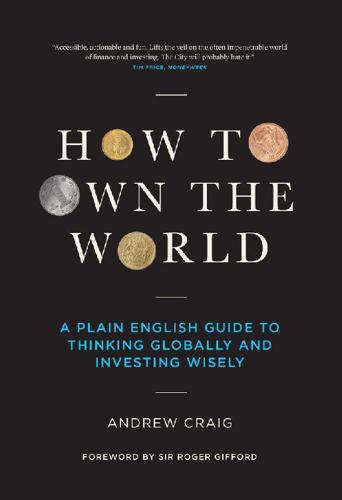
How to Own the World: A Plain English Guide to Thinking Globally and Investing Wisely
by
Andrew Craig
Published 6 Sep 2015
How an Economy Grows and Why It Crashes: A Tale. Hoboken: John Wiley & Sons, 2010. Schlosser, Eric. Fast Food Nation: The Dark Side of the All-American Meal. New York: Perennial, 2002. ———. Reefer Madness: Sex, Drugs, and Cheap Labor in the American Black Market. Boston: Houghton Mifflin, 2003. Schwager, Jack D. Market Wizards: Interviews with Top Traders. Columbia: Marketplace, 2006. Sculley, John. Moonshot!: Game-changing Strategies to Build Billion-dollar Businesses. Rosettabooks, 2014. Shaxson, Nicholas. Treasure Islands: Tax Havens and the Men Who Stole the World. London: Bodley Head, 2011. Shiller, Robert J.
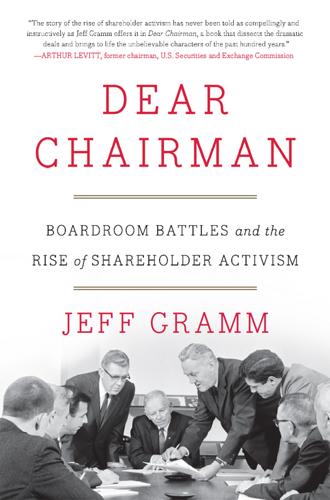
Dear Chairman: Boardroom Battles and the Rise of Shareholder Activism
by
Jeff Gramm
Published 23 Feb 2016
Or, as his lawyers succinctly put it, the filing “shall not be construed to be an admission by the Reporting Persons that a material change has occurred in the facts set forth in this Schedule 13D or that such amendment is required under Rule 13d-2 of the Securities Exchange Act of 1934, as amended.” Ron Burkle, “The Yucaipa Companies,” 13d Morgans Hotels, amendment 10, September 3, 2013. 2. Ibid. 3. Robert A. G. Monks and Nell Minow, Corporate Governance, 5th ed. (Hoboken, NJ: Wiley, 2011), 220. 4. Jack D. Schwager, Market Wizards: Interviews with Top Traders (New York: Harper-Business, 1989), 117. 5. Warren Buffett, “Our Performance in 1963,” letter to partners, January 18, 1964: “Our willingness and financial ability to assume a controlling position gives us two-way stretch on many purchases in our group of generals.”
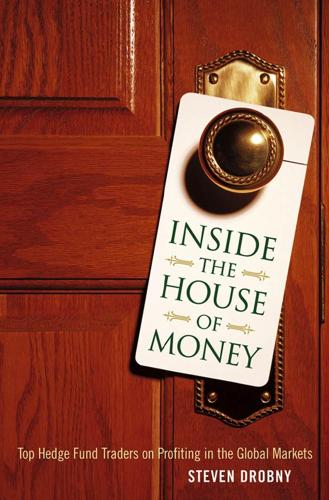
Inside the House of Money: Top Hedge Fund Traders on Profiting in a Global Market
by
Steven Drobny
Published 31 Mar 2006
See also Global macro Major, John, 16 Malaysia, 211, 217, 276 Malaysian ringgit, 20–21 Management fees, 8, 128, 143, 187–188, 282 Marcus, Michael, 9 Margin calls, 11, 17, 260 Market bias, 69 Market capitalization, 73 Market conditions, 96–97, 137, 139–140 Market distress, 141–142 Market equilibrium, 125 Market liquidity, 26 Market panics, 205, 226, 232, 294, 296 Market psychology, 134, 204 Market rallies, 82, 221, 236 Market recovery, 115, 117 Market reversals, 230 Market risk, 313 Market sentiment, 96–97 Market timing, 58 Market trends, 125 Market Wizards (Schwager), 244 Markowitz, Morry, 9 367 INDEX Mark/Swiss trade, 107–108, 131. See also Deutsche mark; Swiss franc Mark-to-market, 25, 133, 137, 140 Martin,William McChesney, 13 Maslow,Abraham, 264 Maslow’s Hierarchy of Needs, 264–265 Mean reversion, 69, 112, 258 Mergers and acquisitions, 24 Meriwether, John, 24, 158 Merton, Robert, 24 Metals, 257 Mexico/Mexican peso, 39, 204, 210, 261, 286–287, 290, 296 Microeconomics, 257 Micromanagement, 32, 52, 60 Microsoft, 59 MinFin, 293 Minimum funding requirements (MFR), 136 Mining, 252 Misalignments, 174 Mispricings, 63, 335 Modern portfolio theory, 232 Mohamad, Mahathir, 20 Monetary policy, 168–169, 327 Money management, 185 Money Masters (Train), 244 Money supply, 93 Mongolia, 261, 289, 306 Moore Capital Management, 134–135, 144, 154–155 Moral hazard, 229–230 Mraz, Jason, 241 MSCI Emerging Markets Eastern Europe, 299 Mullins, David, 24 Multibet portfolio approach, 343–344 Multistrategy hedge fund, 33 Multiyear lockups, 69 Mutual funds, 53, 143, 219–220, 300 NAFTA, 287 NASDAQ, 27–28, 54, 144, 146, 227, 254, 277, 279, 291 National Bureau of Economic Research (NBER), 62 National Health Service (United Kingdom), 61 Natural disasters, economic impact of, 296–297, 349 Natural gas, 256, 263 Negative gamma, 330, 336 Net asset value (NAV), 58, 95, 137, 283 Netherlands, 68, 111 Neuberger, Roy, 233 New economy, 27 Newsletters, 104, 119–120, 130 New Zealand/New Zealand dollar, 66, 151, 167–168, 193 Nicholas, Joseph G., ix, xiv Nifty Fifty, 29 Nigeria, 60 Nixon Administration, 7 Nonprice indicators, 192 Normal distribution, 343–344 North Korea, 305 Nuclear war, 44 “Off the run” bonds, 24 Oil, 166, 193, 219, 230–231, 235, 237, 239, 252, 256, 280 Old economy, 27 Olink, Glen, 9 1-percent-a-month strategy, 292 “On the run” bonds, 24 Open-ended trends, 258 Optimistic traders, 112–113, 272 Option(s), 11, 24, 45, 85, 127, 177, 207, 331–332.
…
After a while, I started thinking, “Is this what I want to do with my life?” I looked at my friends’ careers, and the people who liked their lives the most were the proprietary traders. I started spending my spare time in upstate New York reading finance stuff: Reminiscences of a Stock Operator, Bonfire of the Vanities, Market Wizards, Money Masters—anything I could get my hands on. My game plan was to go to business school; get a job in proprietary trading; work 10 years on the sell side developing my knowledge, experience, contacts, and track record; and then make a move to the buy side. I applied to a bunch of business schools and was offered a fellowship at the University of North Carolina (UNC).
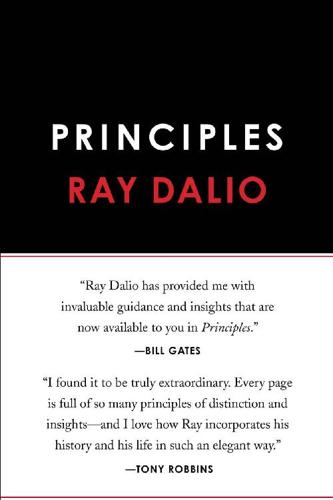
Principles: Life and Work
by
Ray Dalio
Published 18 Sep 2017
Though I had many more winning positions than losing ones, I can only recall the losing ones now. I remember one big one when I owned pork bellies. For several days the market for them was limit down—meaning that the price had fallen so low that trading had to be stopped. I later described the impact of this experience to Jack Schwager, the author of Hedge Fund Market Wizards: In those days, we had the big commodity boards, which clicked whenever prices changed. So each morning, on the opening, I would see and hear the market click down 200 points, the daily limit, stay unchanged at that price, and know that I had lost that much more, with the amount of potential additional losses still undefined.

Extreme Money: Masters of the Universe and the Cult of Risk
by
Satyajit Das
Published 14 Oct 2011
Nouriel Roubini and Stephen Mihm (2010) Crisis Economics: A Crash Course in the Future of Finance, Allen Lane, London. Gary R. Saxonhouse and Robert M. Stern (eds) (2004) Japan’s Lost Decade: Origins, Consequences and Prospects for Recovery, Blackwell Publishing, Oxford. Michael Schuman (2009) The Miracle: The Epic Story of Asia’s Quest for Wealth, Harper Business, New York. Jack D. Schwager (1992) The New Market Wizards: Conversations with America’s Top Traders, John Wiley, New Jersey. Fred Schwed Jr (2006) Where Are The Customers’ Yachts? Or A Good Hard Look at Wall Street, John Wiley, New Jersey. Robert Shiller (2005) Irrational Exuberance, Currency Doubleday, New York. Georg Simmel (1990) The Philosophy of Money, Routledge, London.